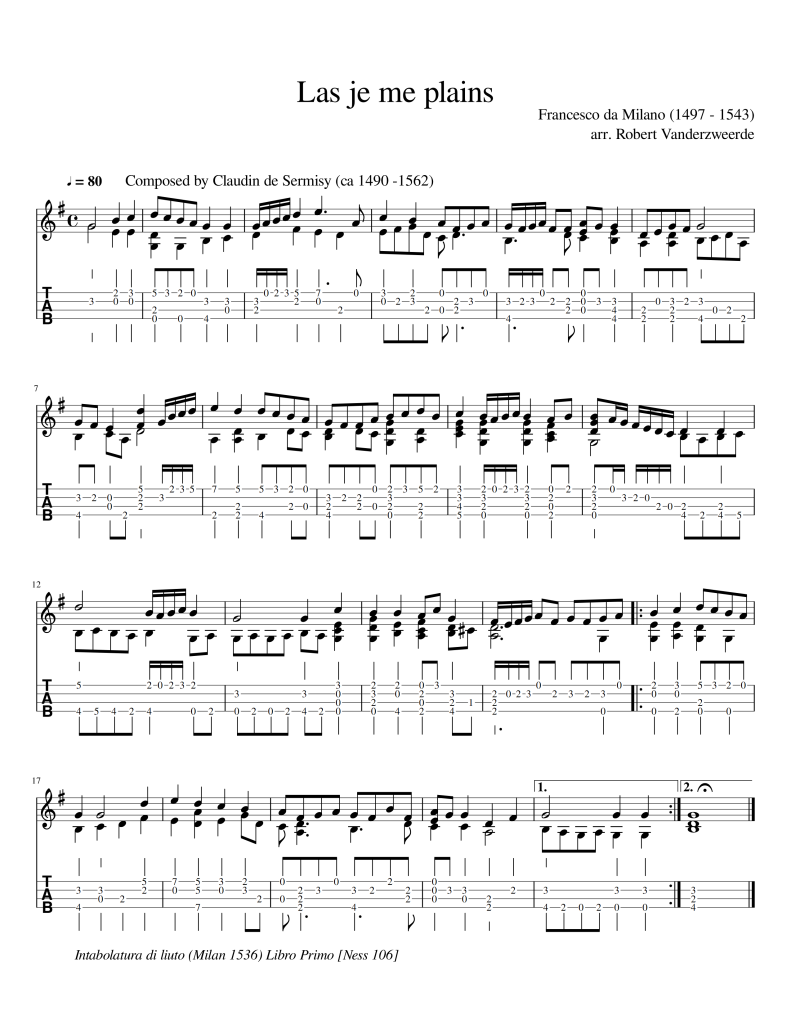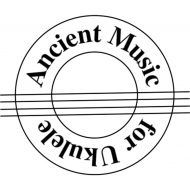The music and materials posted on this page are free to download and enjoy. Simply right click on the image and select “Save image as …”. The images are full-page in size and can be printed. If this does not work for you, please contact us and we’ll send you a PDF of the arrangement.
Recordings of the music are available for listening on SoundCloud and/or viewing/listening on YouTube.
Ukulele Strumming and Picking Patterns
This chart is in “Ballads & Songs for Ukulele” and “The Yuletide Ukulele”. It contains all the strumming and picking patterns that the arranger uses for any kind of sing-along, including modern folk and popular music.
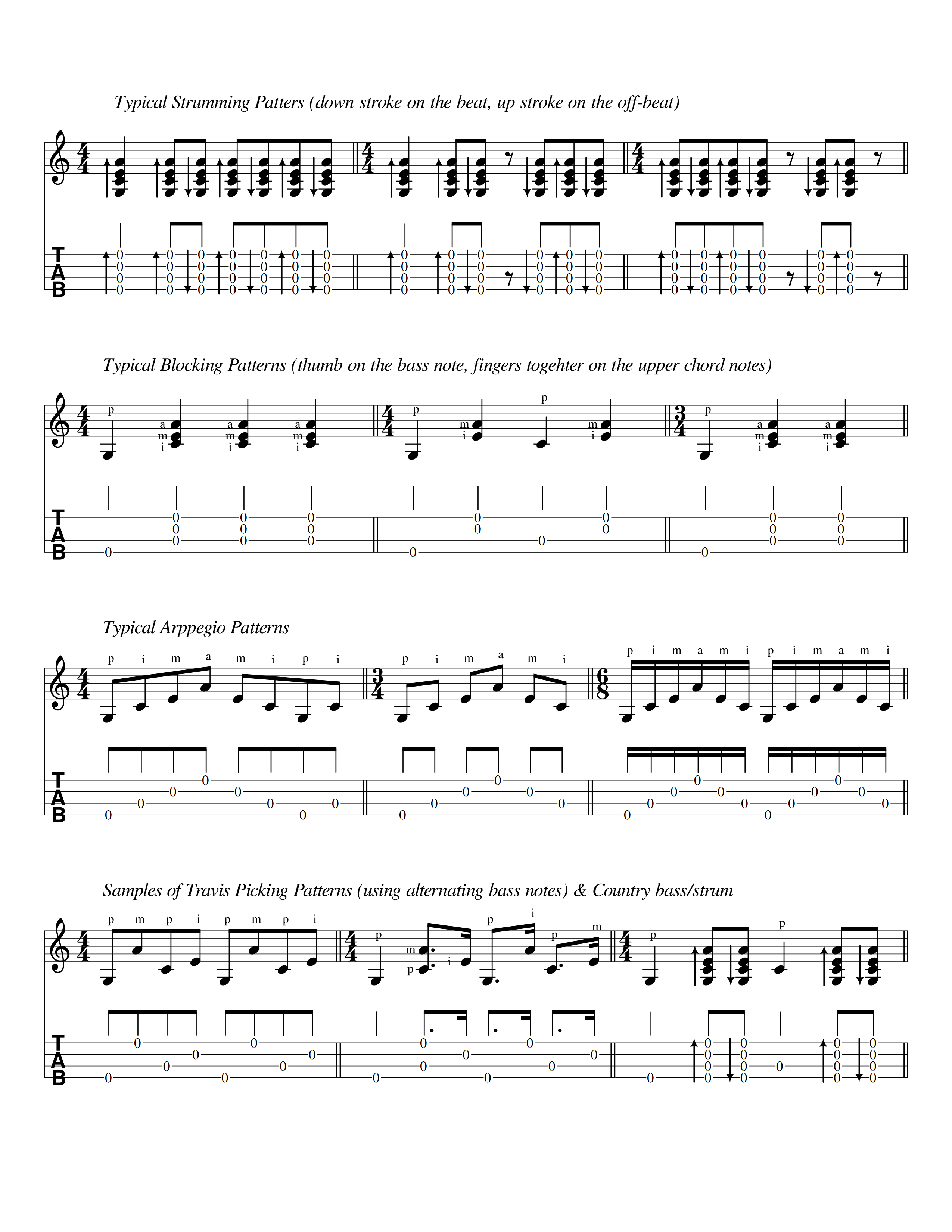
The Woods so Wild
Here’s an arrangement of a piece by William Byrd (1543 – 1623). It’s quite lengthy so only the first 16 bars are arranged. There are two versions, the first is simpler and the second is more challenging. I’d appreciate if you can tell me if you like this arrangement. Listen to it on SoundCloud. View/listen to it on YouTube.

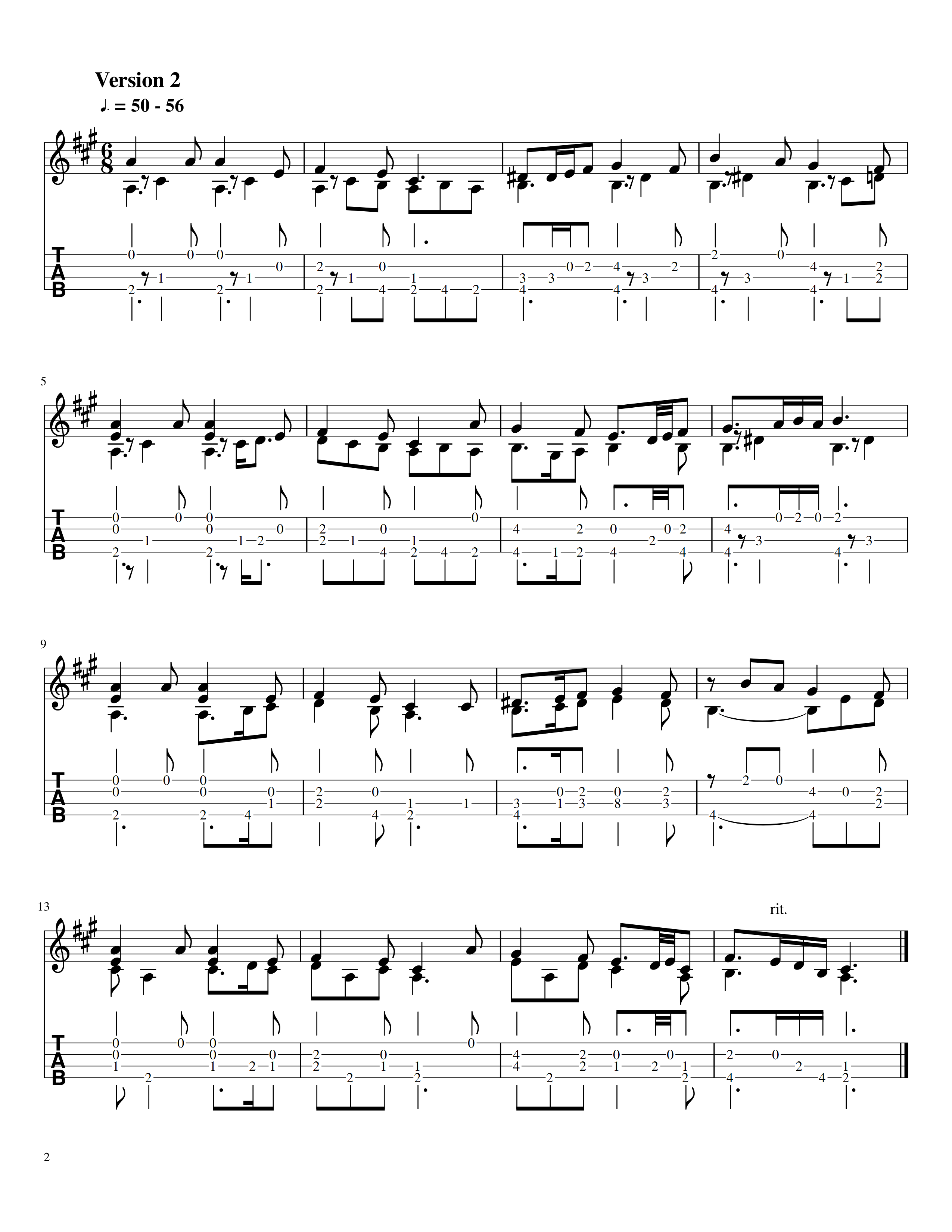
“Little” Prelude
Here’s a prelude by Johann Sebastian Bach (1685 – 1750). I already have two other preludes in the book “Bach Favorites on the Ukulele” so I’m making this available for free. In this arrangement for ukulele, only the first bar has an indication of how to perform this music with fingering for the right hand but no fingering for the left hand is included (all assuming you are a right-handed player). This is an advanced piece in terms of difficulty. I’d appreciate any feedback or comments on this. Listen to it on SoundCloud. View/listen to it on YouTube.



Pseaulme “Super flumina”
In the collection of surviving works of Gregoire Brayssing (fl. 1547-60), there are five pseaulmes (psalms or sacred songs). I have arranged four of these for ukulele into a single work with separate movements in “Brayssing Favorites on the Ukulele”, however, the last one, “Super Flumina” or “Large Rivers”, is presented here for free for you to explore and play. Listen to it on SoundCloud. View/listen to it on YouTube.

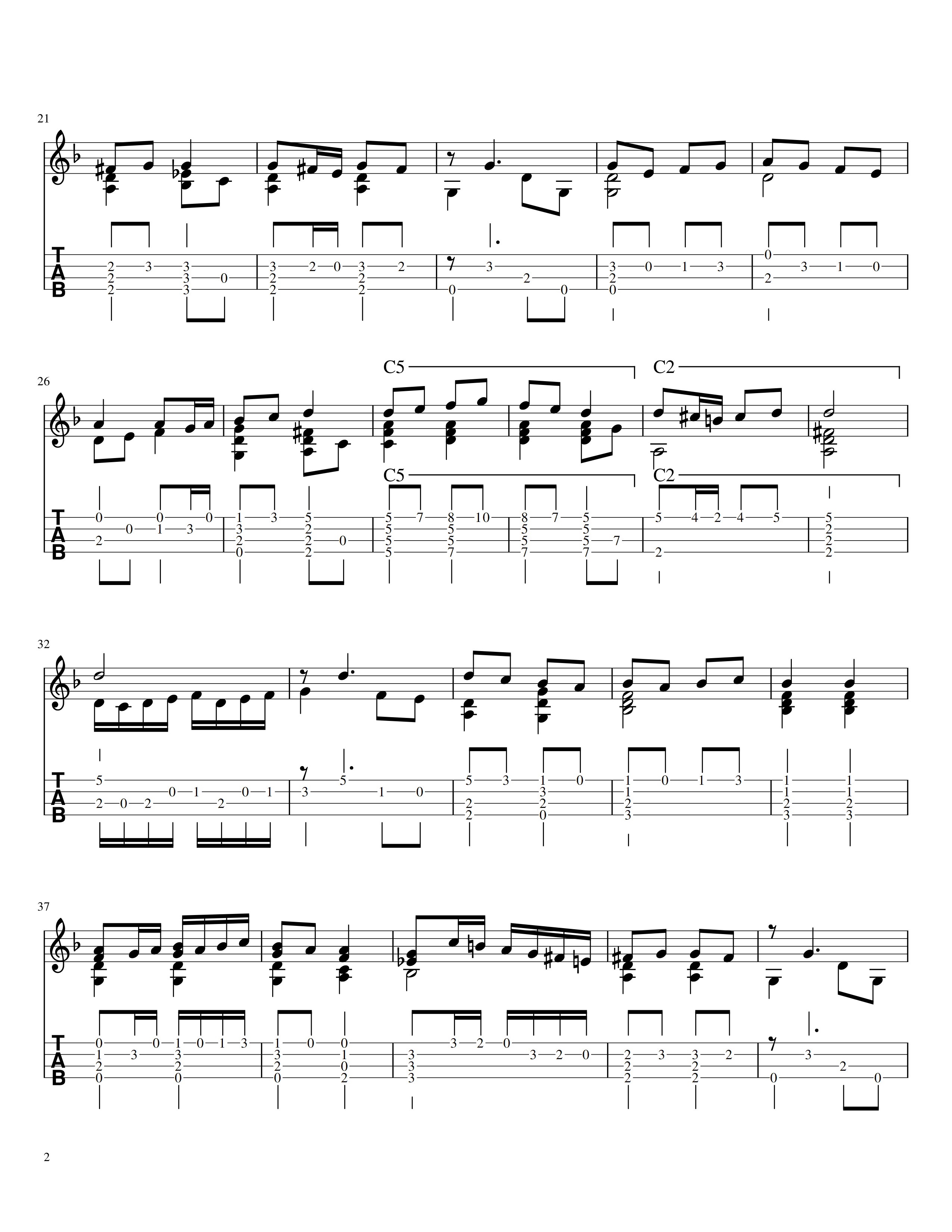
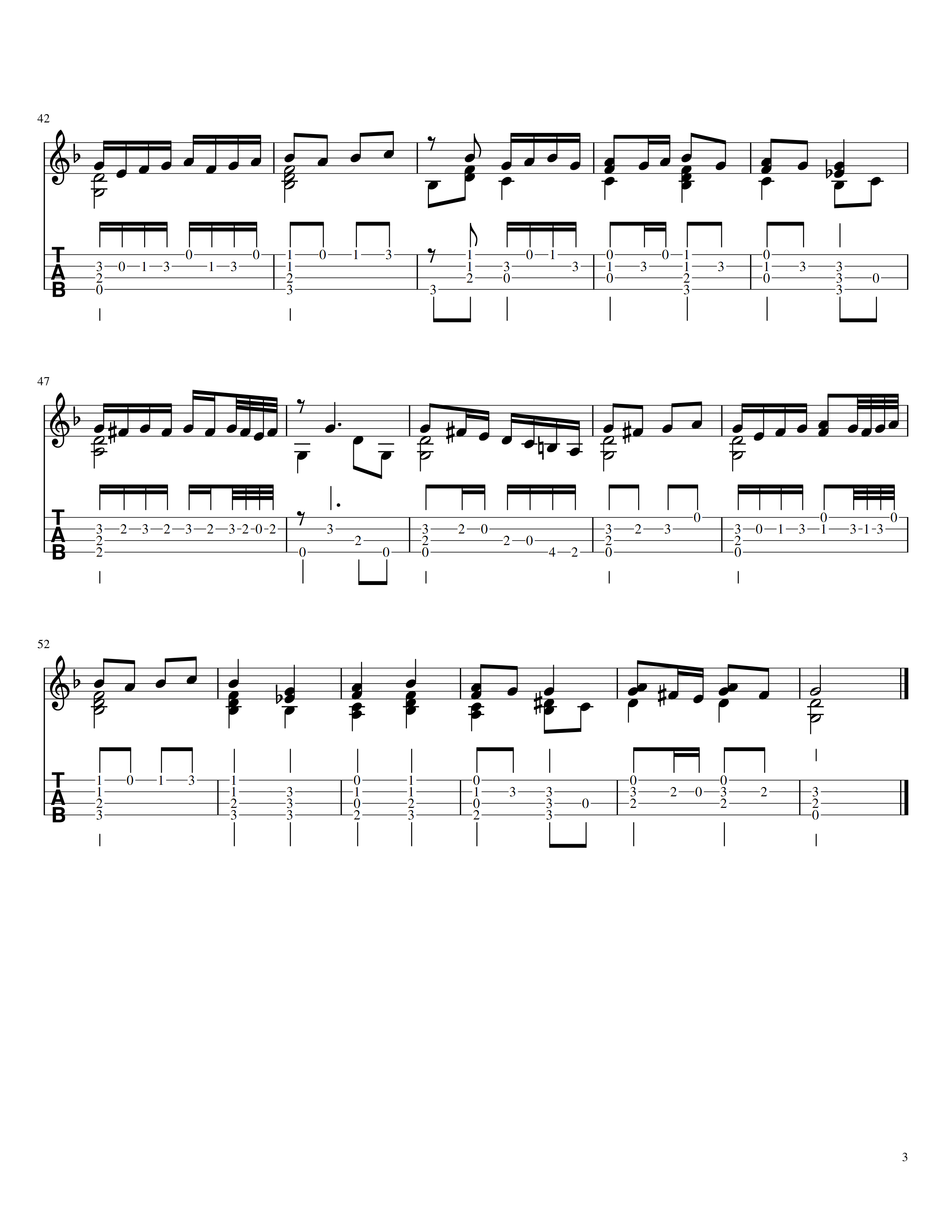
Les Barricades Mystérieuses
Here is the complete score for Les Barricades Mysterieuses by François Couperin (1668 – 1733) arranged for ukulele. The original music, other than first 8 bars, has no suggestions on how to play it. In this arrangement, the major variations are marked so it’s easier to see what is repeated and what is different (the main theme is repeated 5 times in sections A1 to A5 with only the first two notes different in each repeated section). Finally, please send me any corrections or recommendations for this piece. Listen to it on SoundCloud. NOTE: This pieces is now included in “A Military Recital on the Ukulele”.

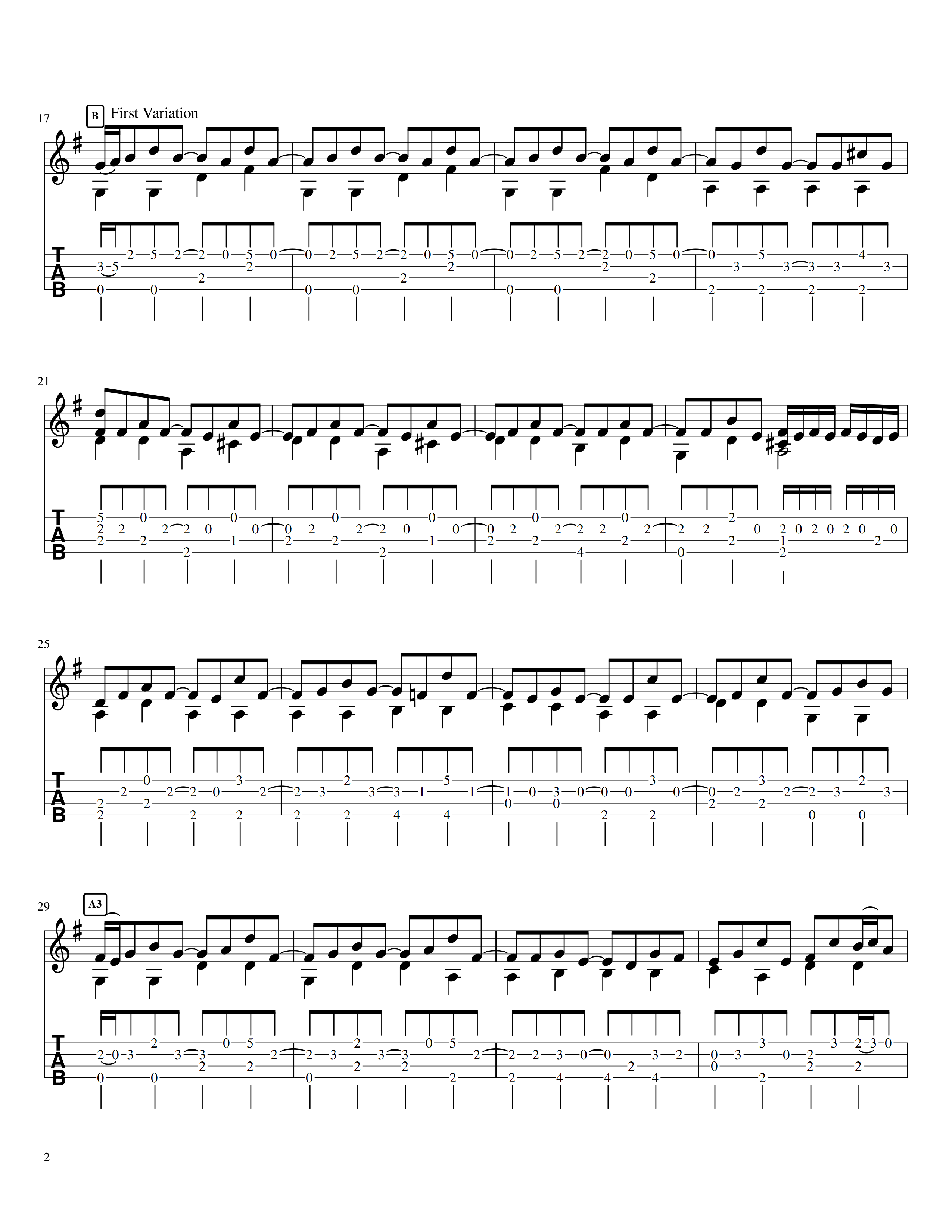
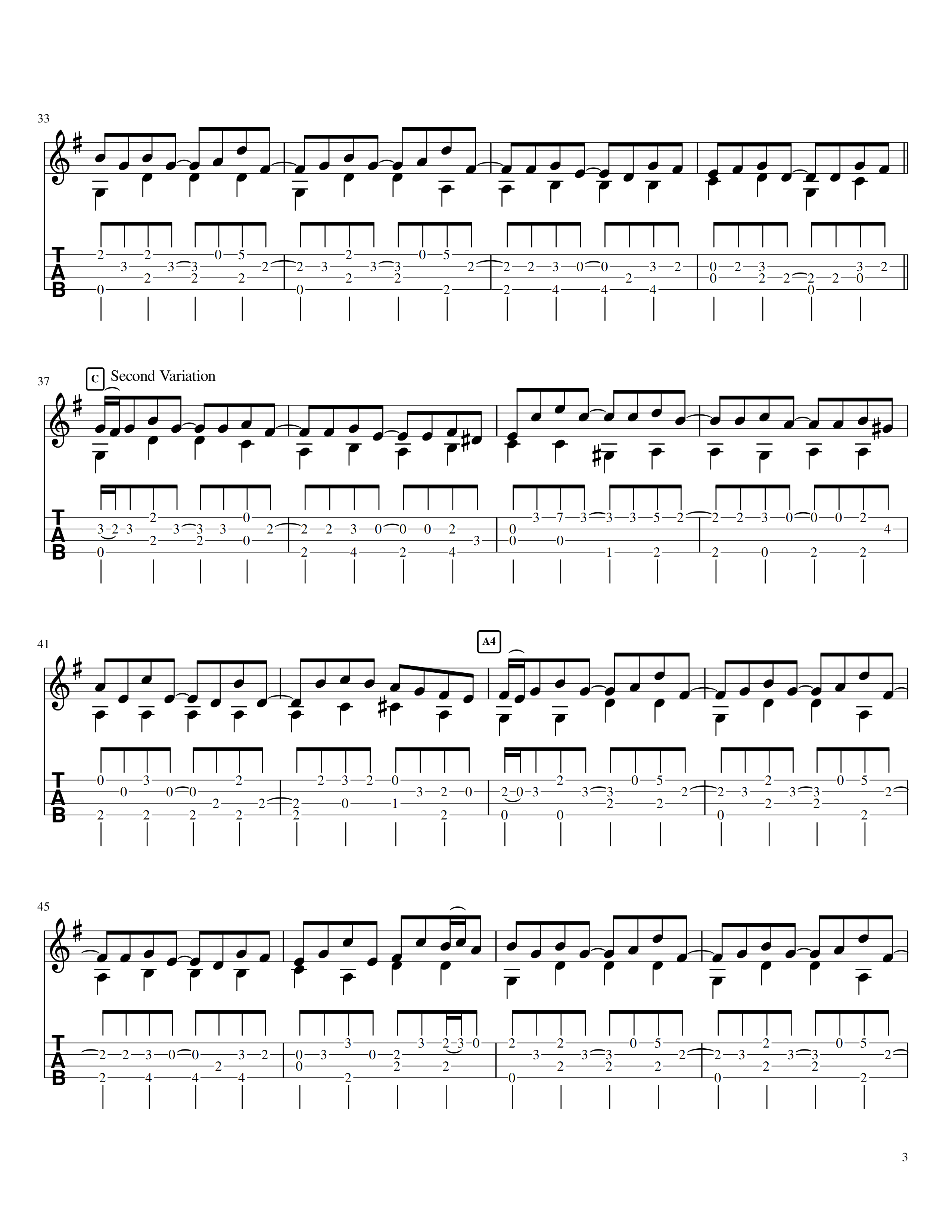
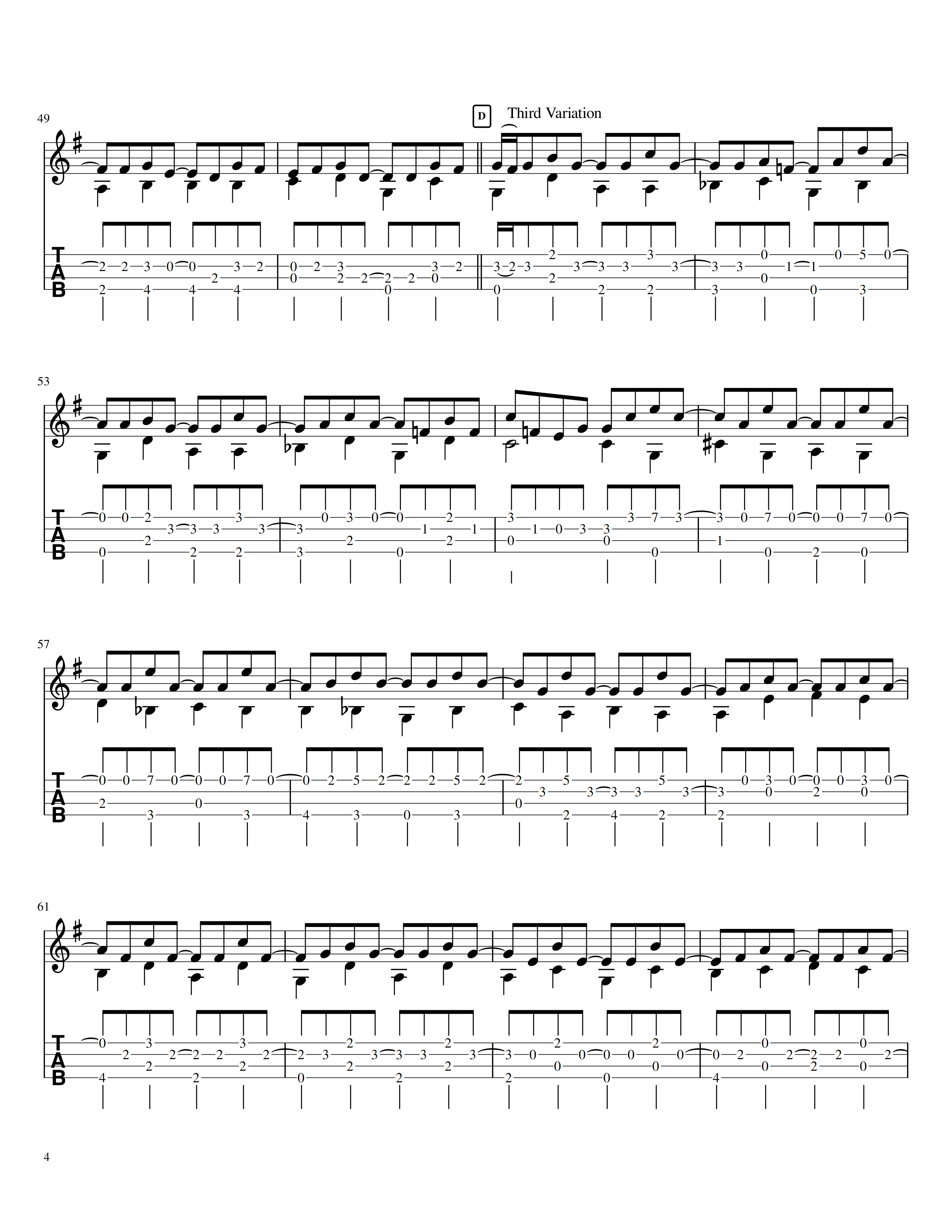

Demie Basse-Dance
In the third book published by Adrian Le Roy (ca 1520-98), there was a different kind of dance. The Basse-Dance, or “low dance”, was a popular court dance in the 15th and early 16th centuries. The word basse describes the nature of the dance, in which partners move quietly and gracefully in a slow gliding or walking motion without leaving the floor. I’m making this arrangement available to you (the other basse-dance is in the book “Le Roy Favorites on the Ukulele”. Listen to it on SoundCloud. View/listen to it on YouTube.

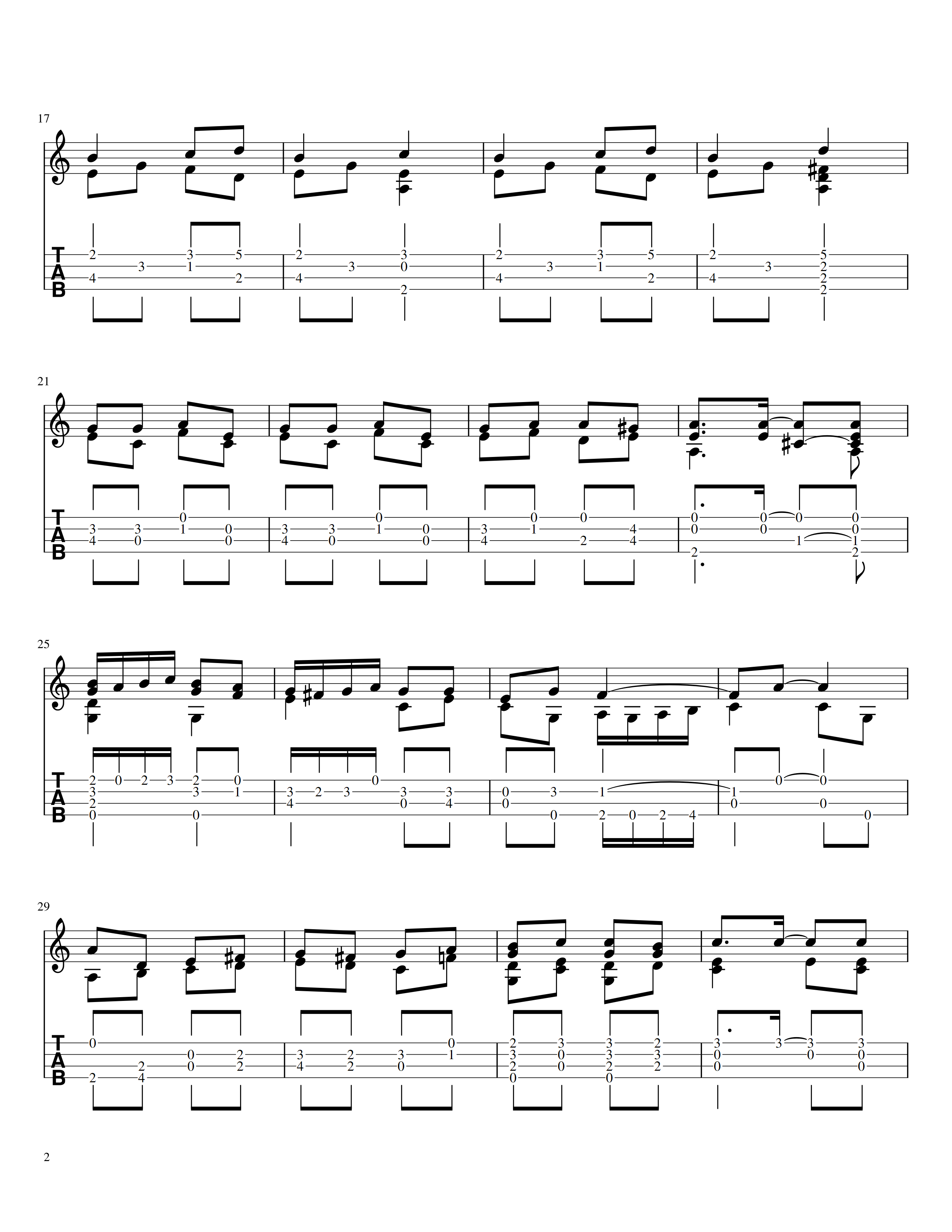
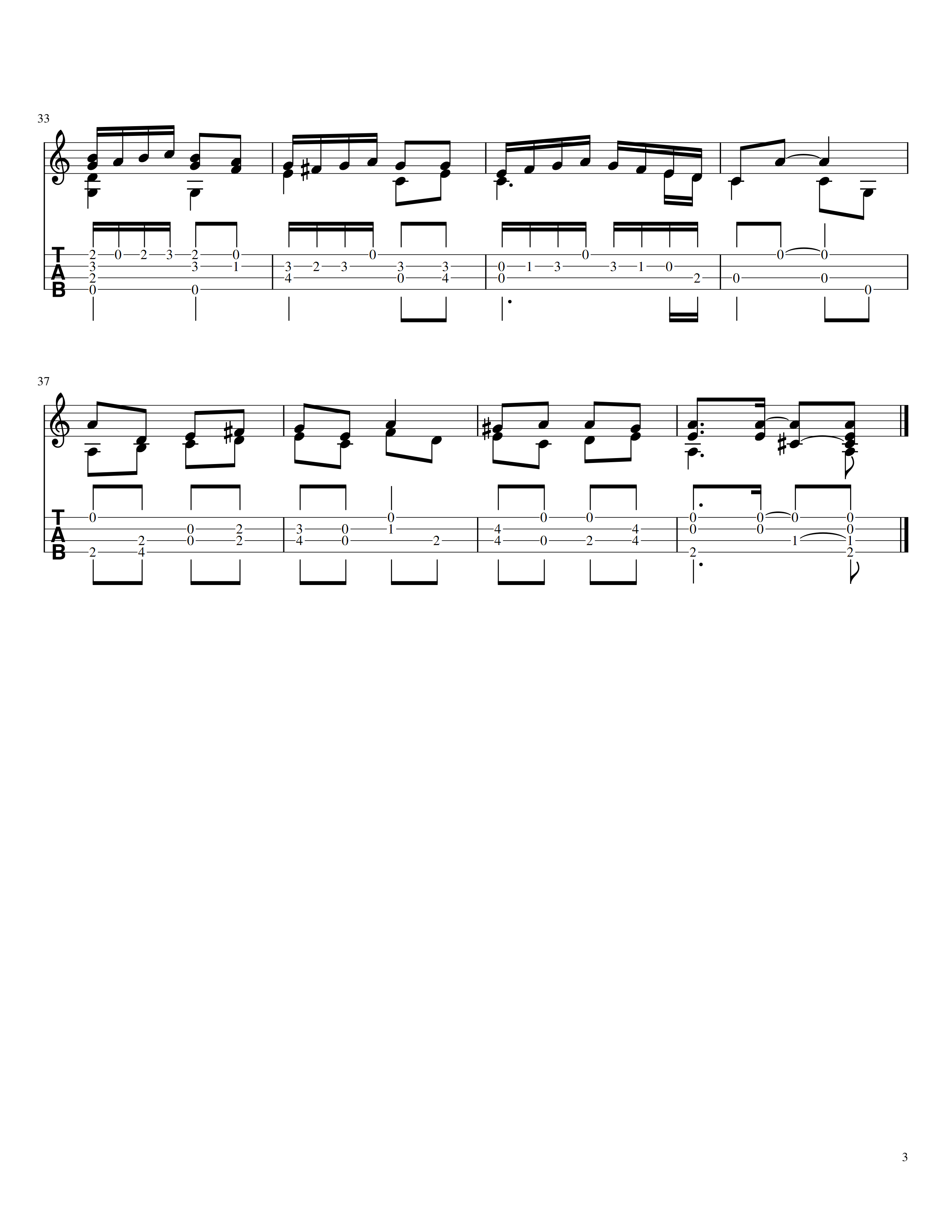
Conte Clare
Guillaume Morlaye (ca 1510-88) composed several Conte Clare, or Spanish echo songs. I’m making two of them available here for your enjoyment. The other two are in the books “Morlaye Favorites on the Ukulele”.
This one is in his second book published (1553) and is in the key of C. There are no repeats (echoes) marked in the original score. Listen to it on SoundCloud. View/listen to it on YouTube.
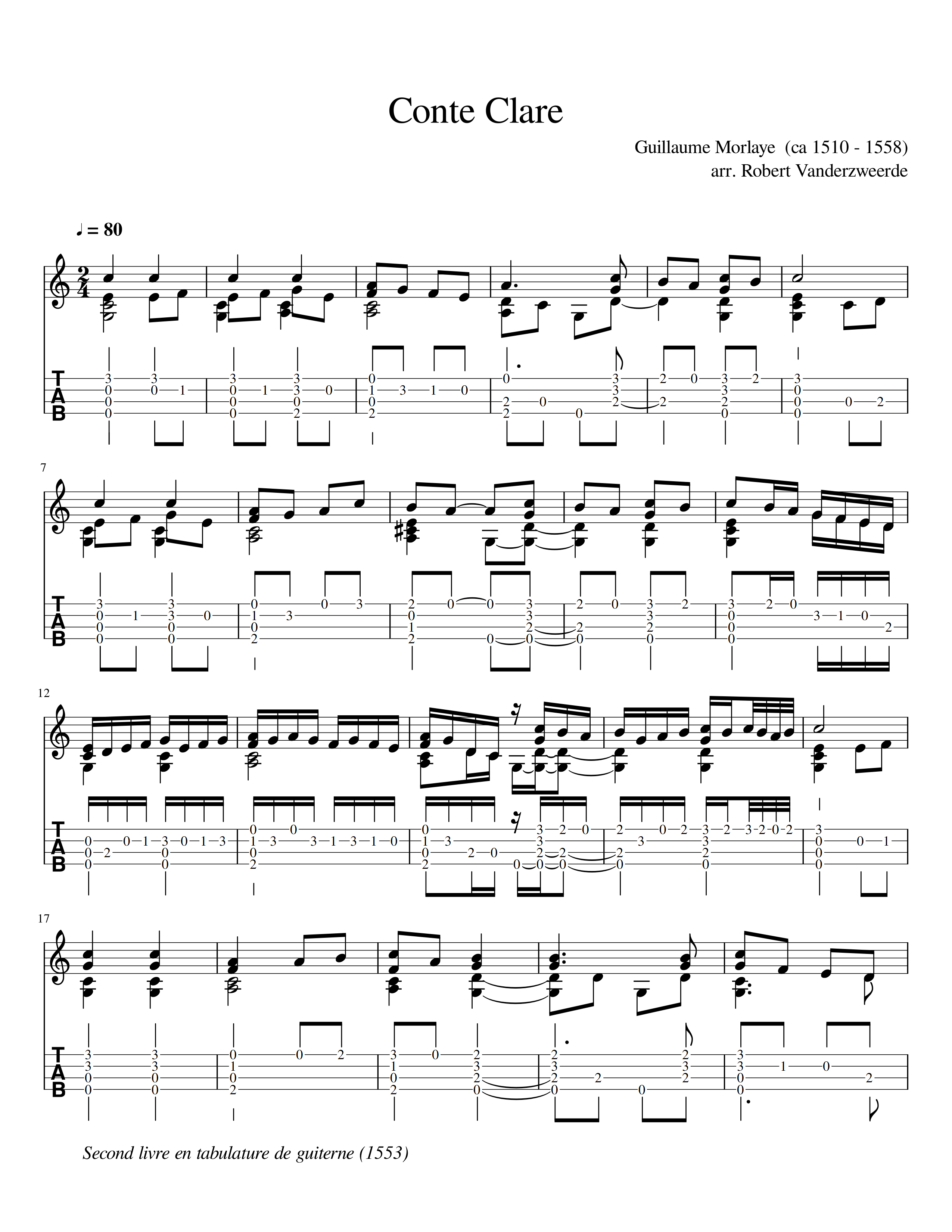
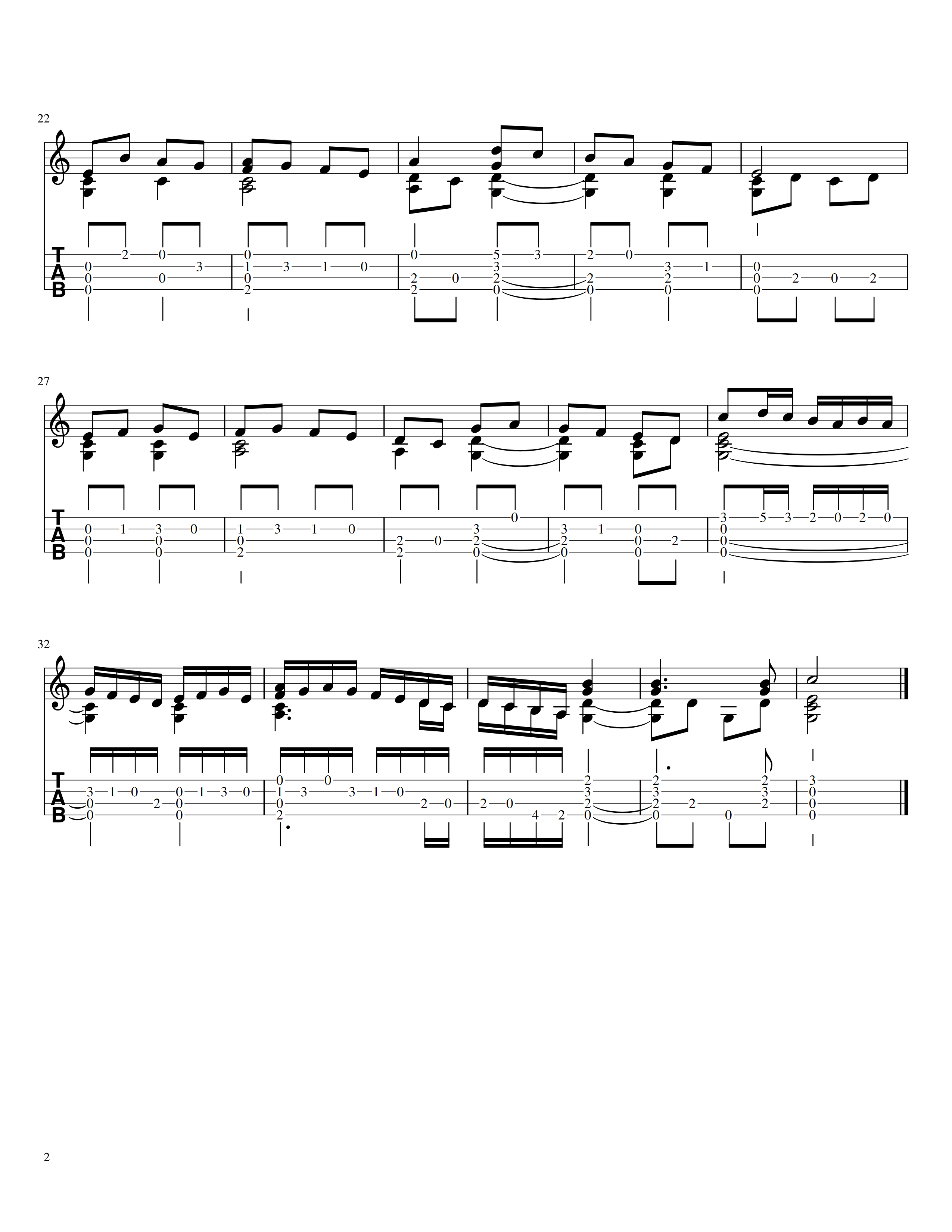
This one is in his fourth book published (1552) and is in the key of F. There are repeats (echoes) marked every 6 bars. To make the piece interesting, each repeat should be varied (e.g. loud, then soft, or harsh, then legato or smooth). It also has the notation “a chorde auallée” which means to use an alternate tuning where the lowest or 4th string is dropped in pitch by a whole tone (from G to F on the Renaissance guitar or on your ukulele). Listen to it on SoundCloud. View/listen to it on YouTube.
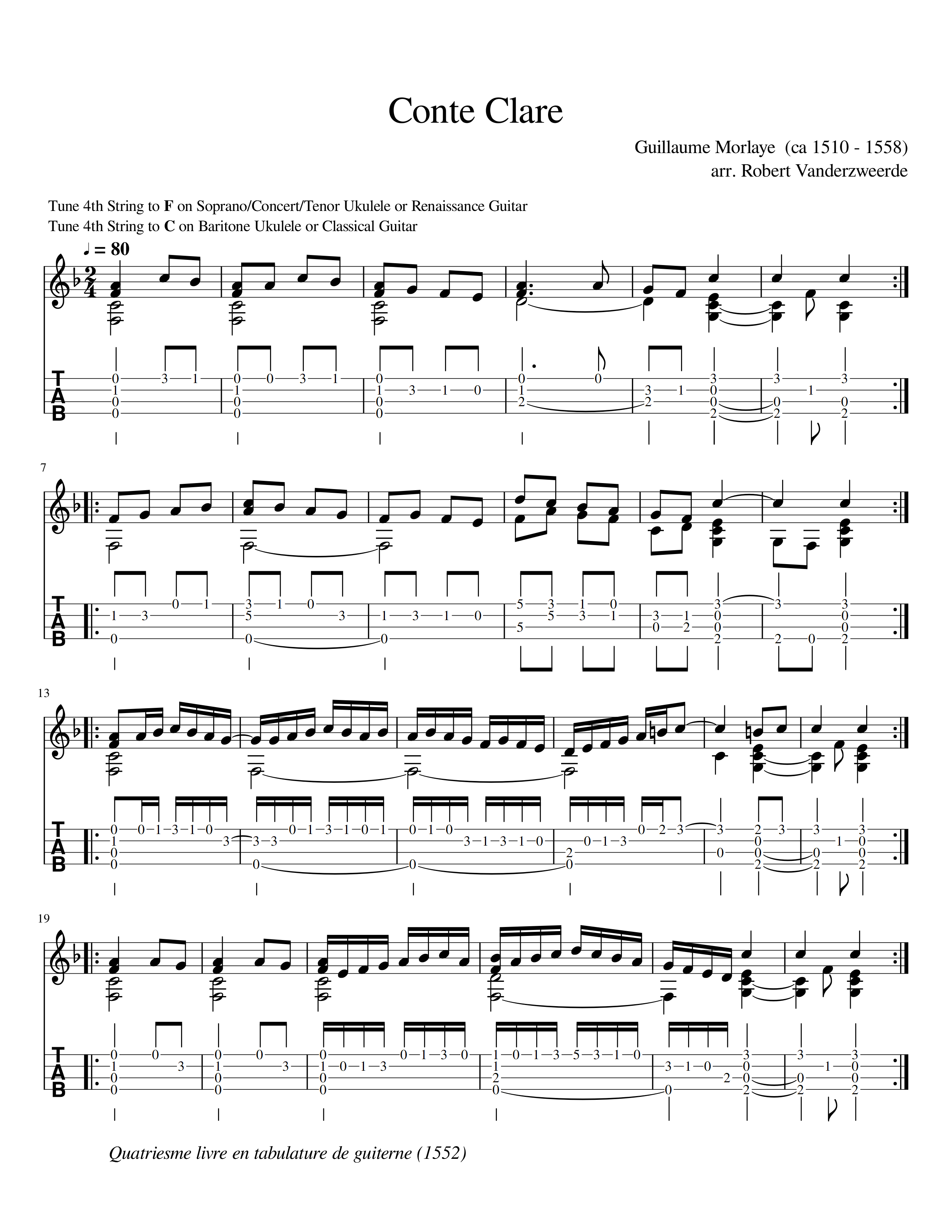
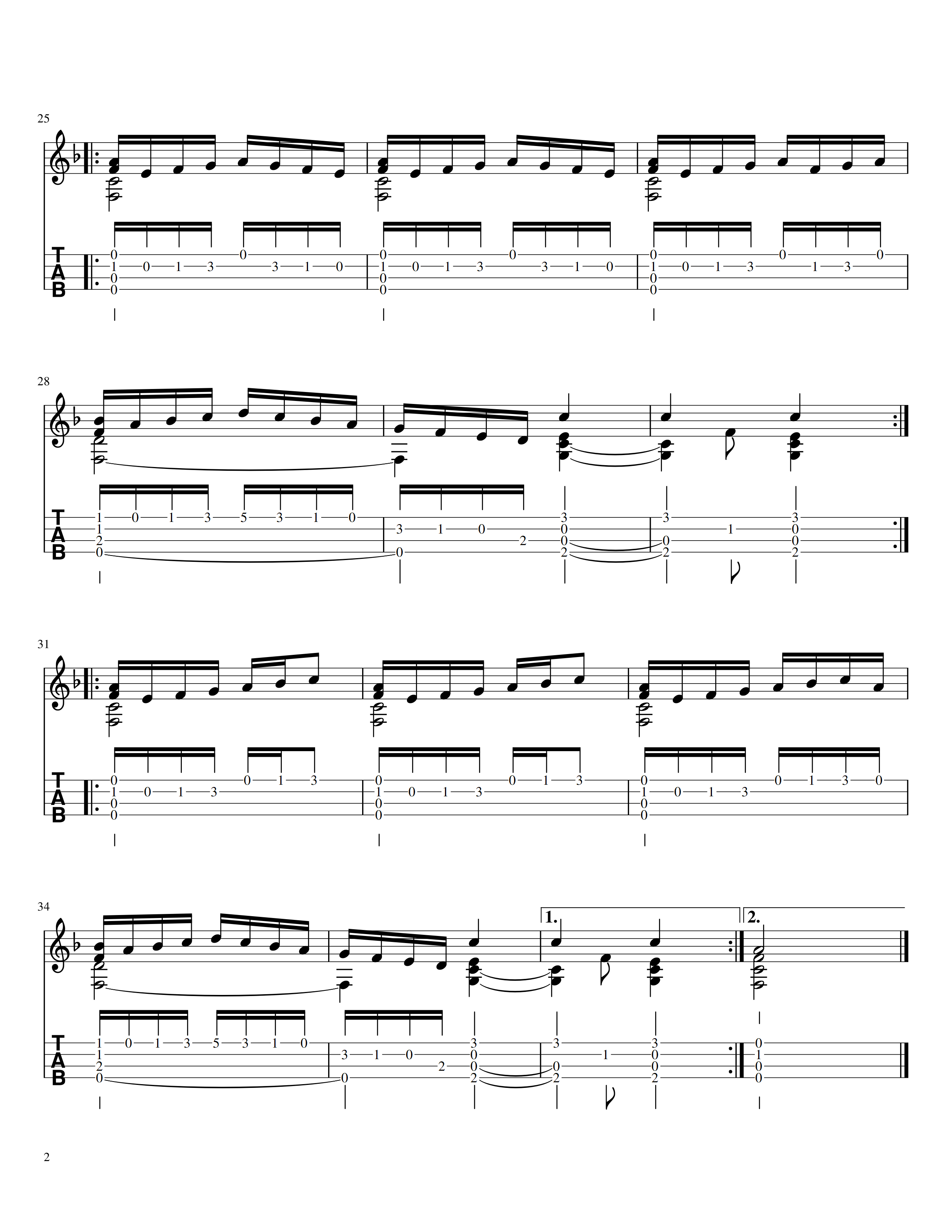
Prelude
In the third book published by Adrian Le Roy (ca 1520-98), there are two preludes. A prelude is a short piece of music, the form of which may vary from piece to piece. The prelude may be thought of as a preface. Stylistically, the prelude is improvisatory in nature. For the lute and other Renaissance string instruments, they were originally used for warming up the fingers and checking the instrument’s tuning and sound quality. This is the first prelude from Le Roy’s third book for you enjoyment (the second prelude is in the book “Le Roy Favorites on the Ukulele”). Listen to it on SoundCloud. View/listen to it on YouTube.


Gaillarde
In the nine books published by Adrian Le Roy (ca 1520-98) and Guillaume Morlaye (ca 1510-88), there are dozens of dances, including gaillardes. A gaillarde or galliard was a form of Renaissance dance and music popular all over Europe in the 16th century. It is mentioned in dance manuals from England, France, Spain, Germany, and Italy. It is an athletic dance, characterised by leaps, jumps, hops and other similar figures in a series of choreographed patterns of steps. After the dance fell out of popular use and, in musical compositions, the galliard often filled the role of an after dance written in 3 or 6, which followed and mimicked another piece (sometimes a pavane) written in 2 or 4. This is a sample arrangement of a gaillarde for you. Listen to it on SoundCloud. View/listen to it on YouTube.
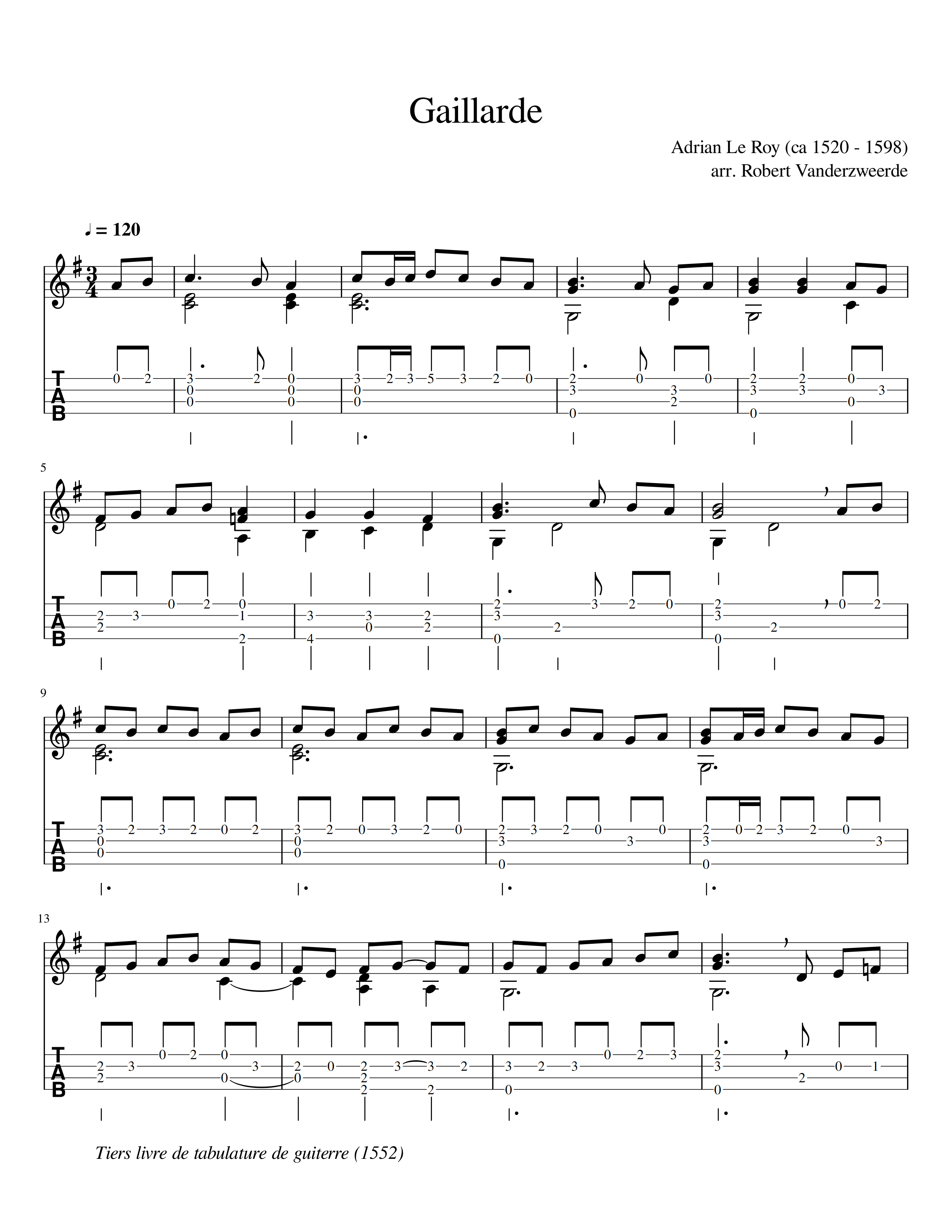
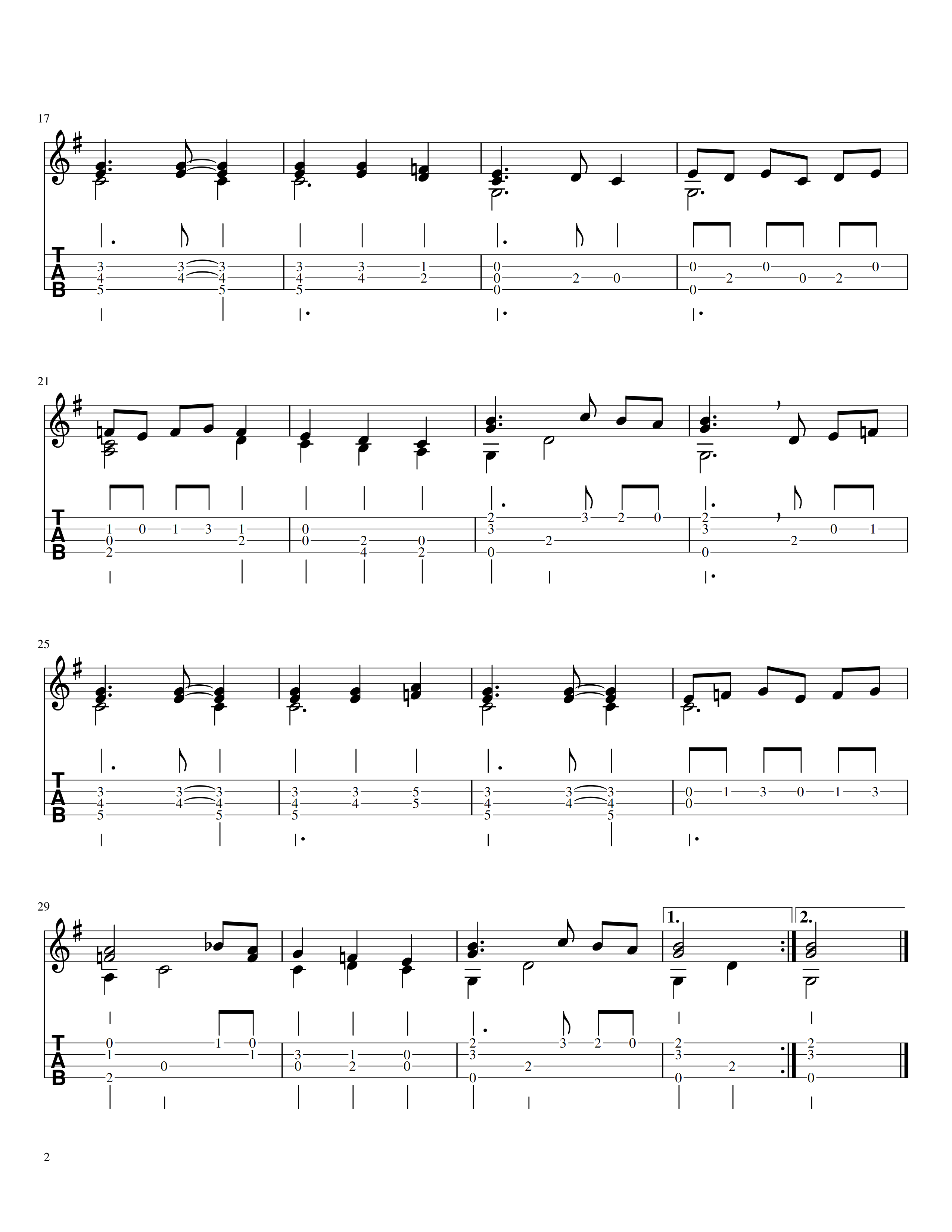
Chansons
In the book Cinquiesme livre de guiterre en tabulature (1554) published by Adrian Le Roy, there are dozens of chansons or songs. Most of these are by Jacques Arcadelt (ca 1507 – 1568) are in the book “Arcadelt Favorites on the Ukulele”. The remaining 6 pieces are by other composers and are presented here for you to enjoy and play.
“Escoutez ma complainte” Listen to it on SoundCloud. View/listen to it on YouTube.
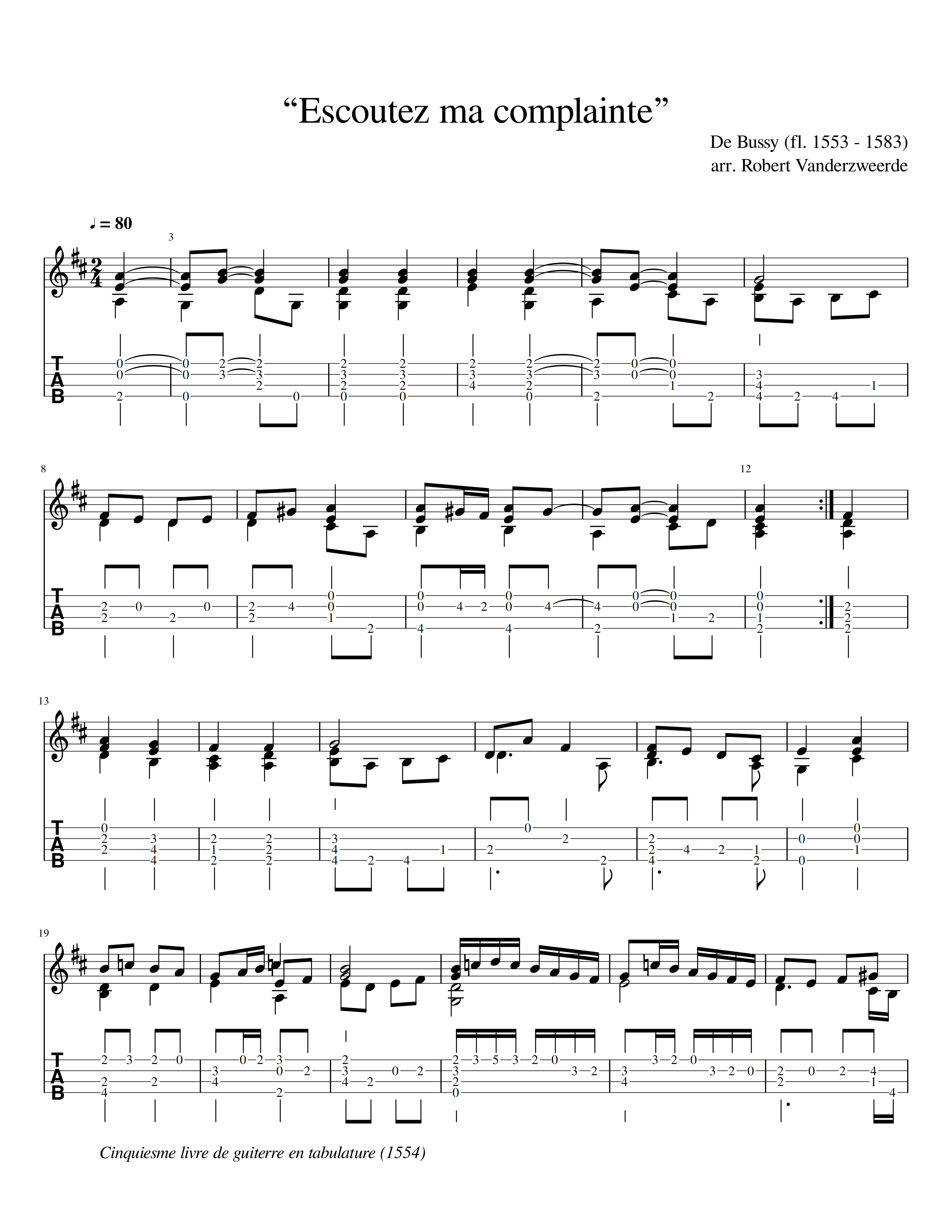

“L’esté chault bouilloit” Listen to it on SoundCloud. View/listen to it on YouTube.
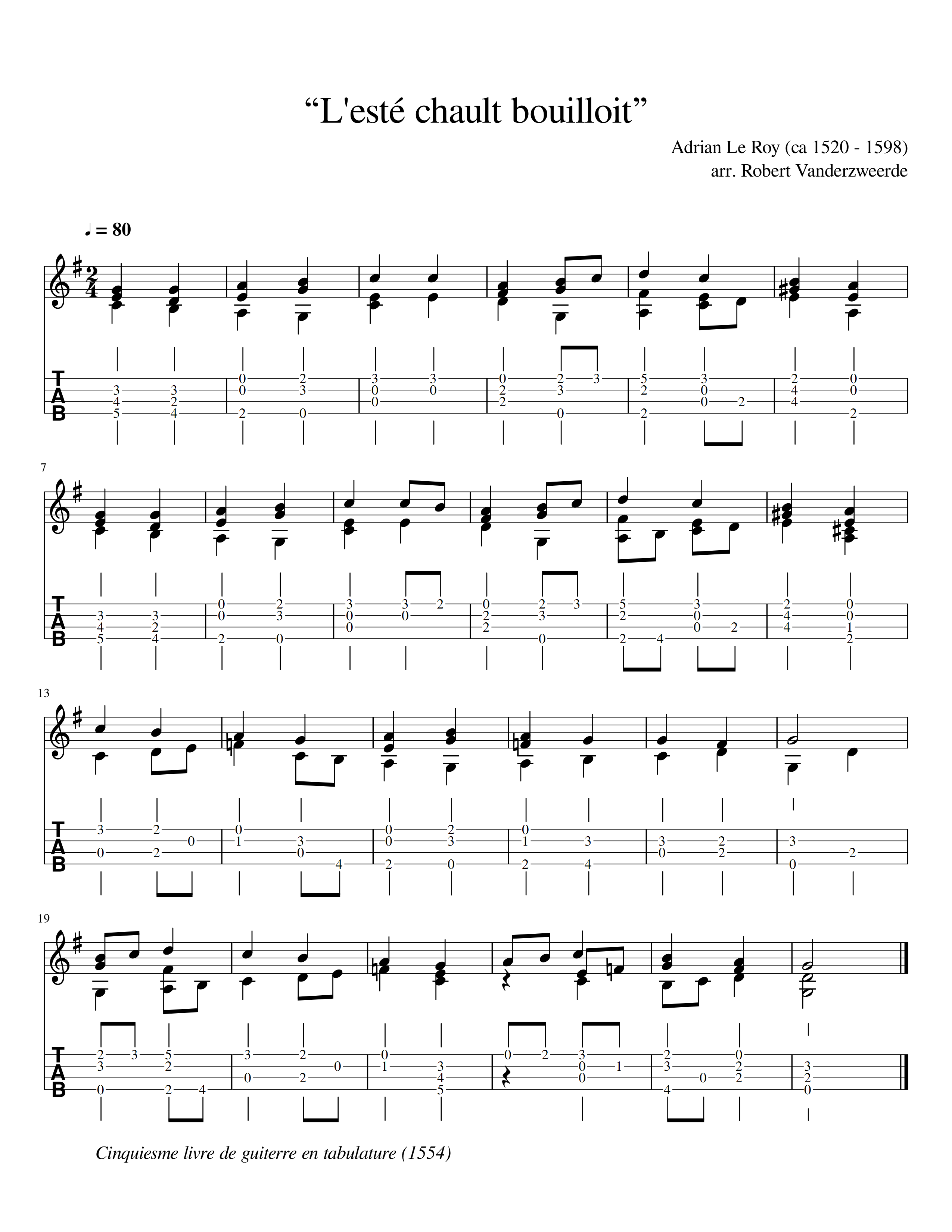
“Au jour au jour au jour” Listen to it on SoundCloud. View/listen to it on YouTube.
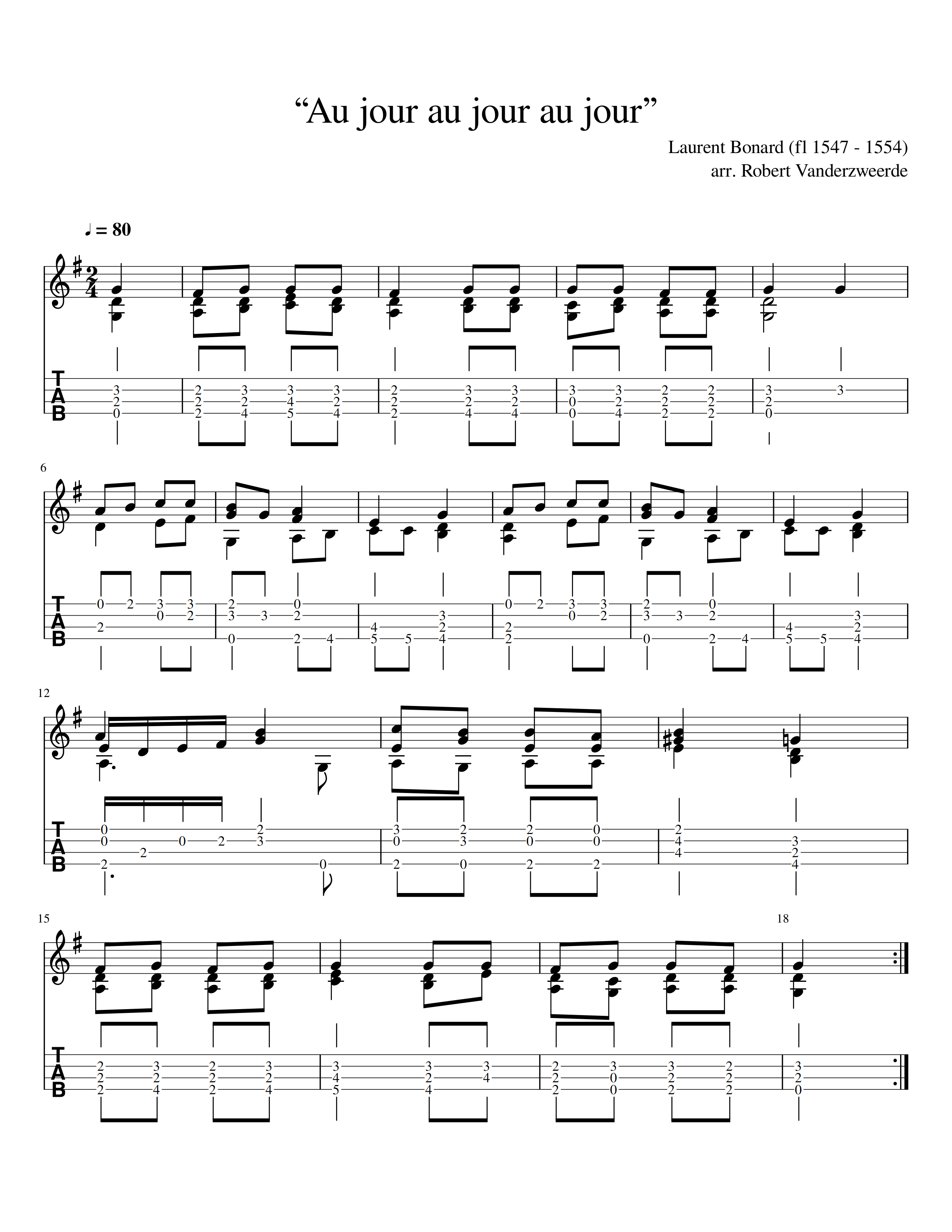

“Si j’ayme ou non” Listen to it on SoundCloud. View/listen to it on YouTube.
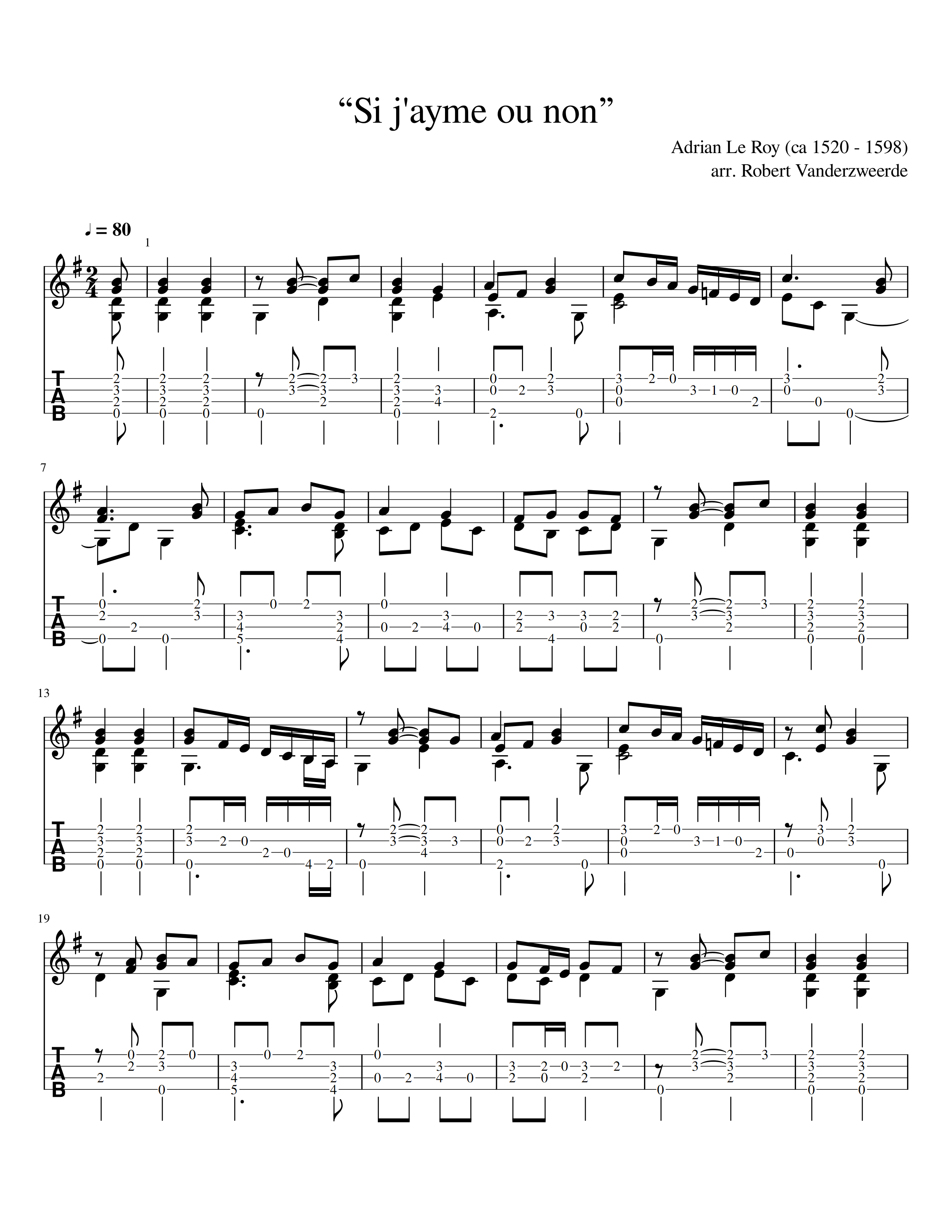

“Jamias femme ne sera” Listen to it on SoundCloud. View/listen to it on YouTube.
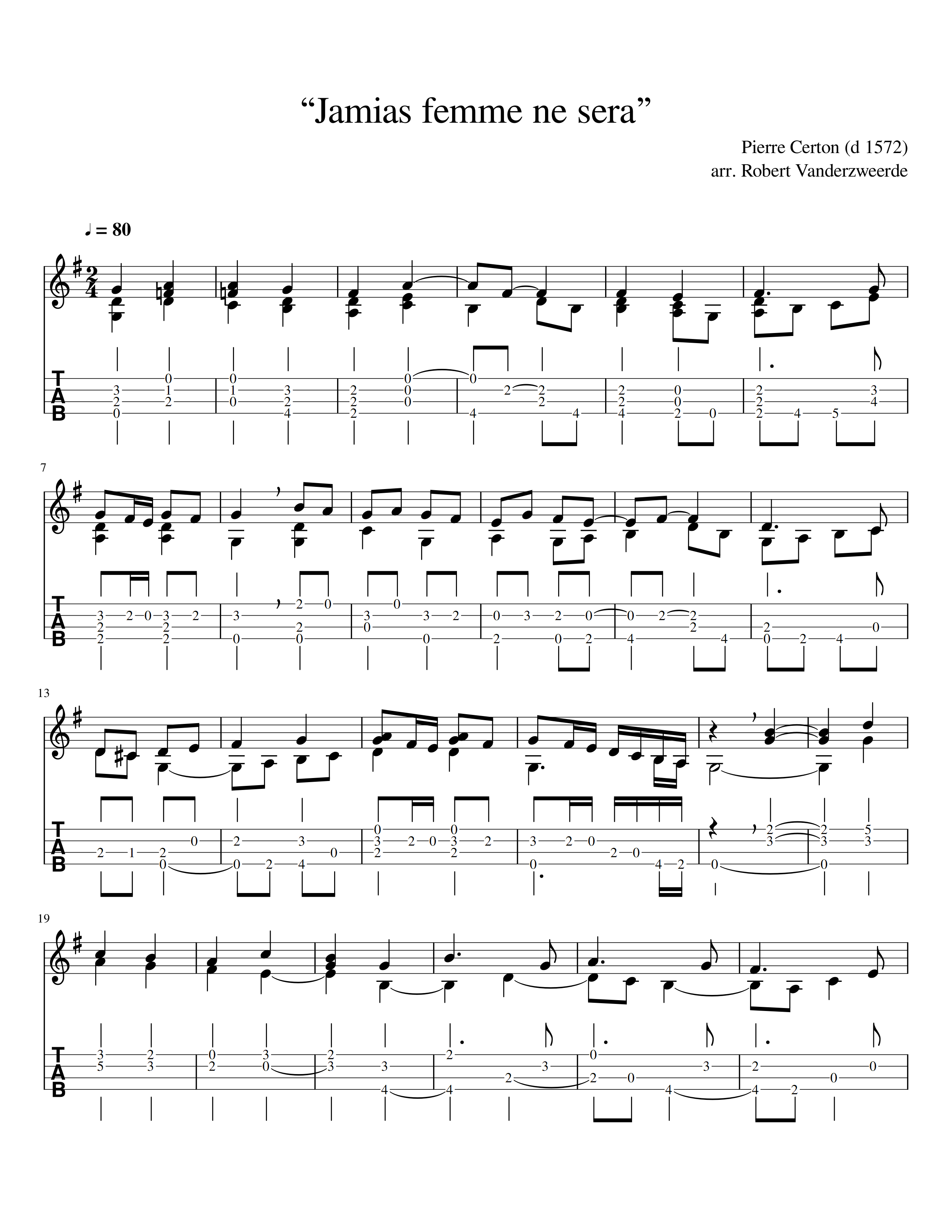

“Je sonne la retraitte” Listen to it on SoundCloud. View/listen to it on YouTube.


Fantasia #9, Tento #2 and Tento #3
The arrangements of the music of Luys Milan from his 1536 publication, El Maestro, are completed. To celebrate, I’m making the following pieces, Fantasia #9 and Tentos #2 and #3, available for free.
A fantasia or fantasie is a musical composition with its roots in the art of improvisation. The term was first applied to music during the 16th century, at first to refer to the imaginative musical “idea” rather than to a particular compositional genre. Its form and style consequently ranges from the freely improvisatory to the strictly contrapuntal, and also encompasses more or less standard sectional forms (i.e. it sometimes but doesn’t always follow the “rules”). Listen to Fantasia #9 on SoundCloud. View/listen to it on YouTube.
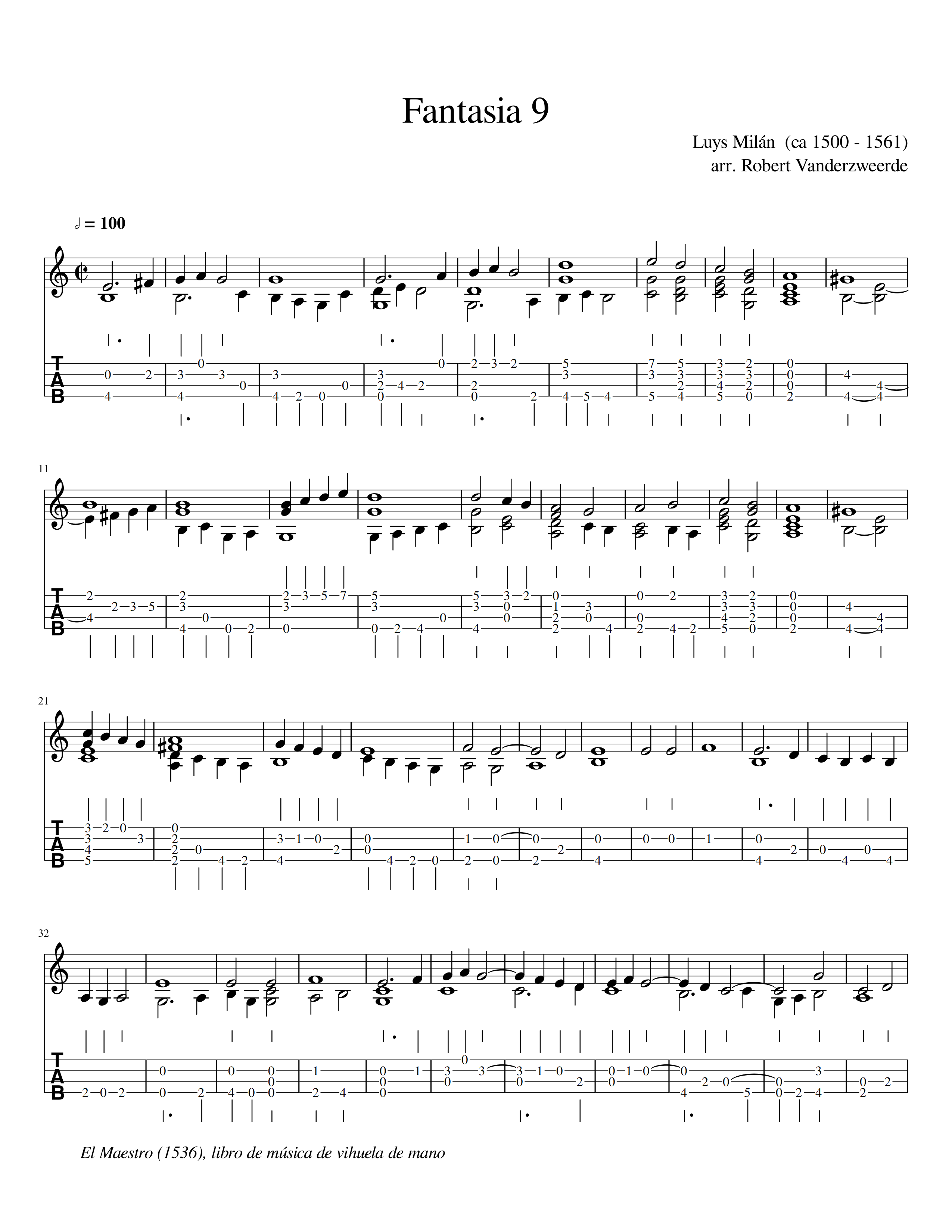

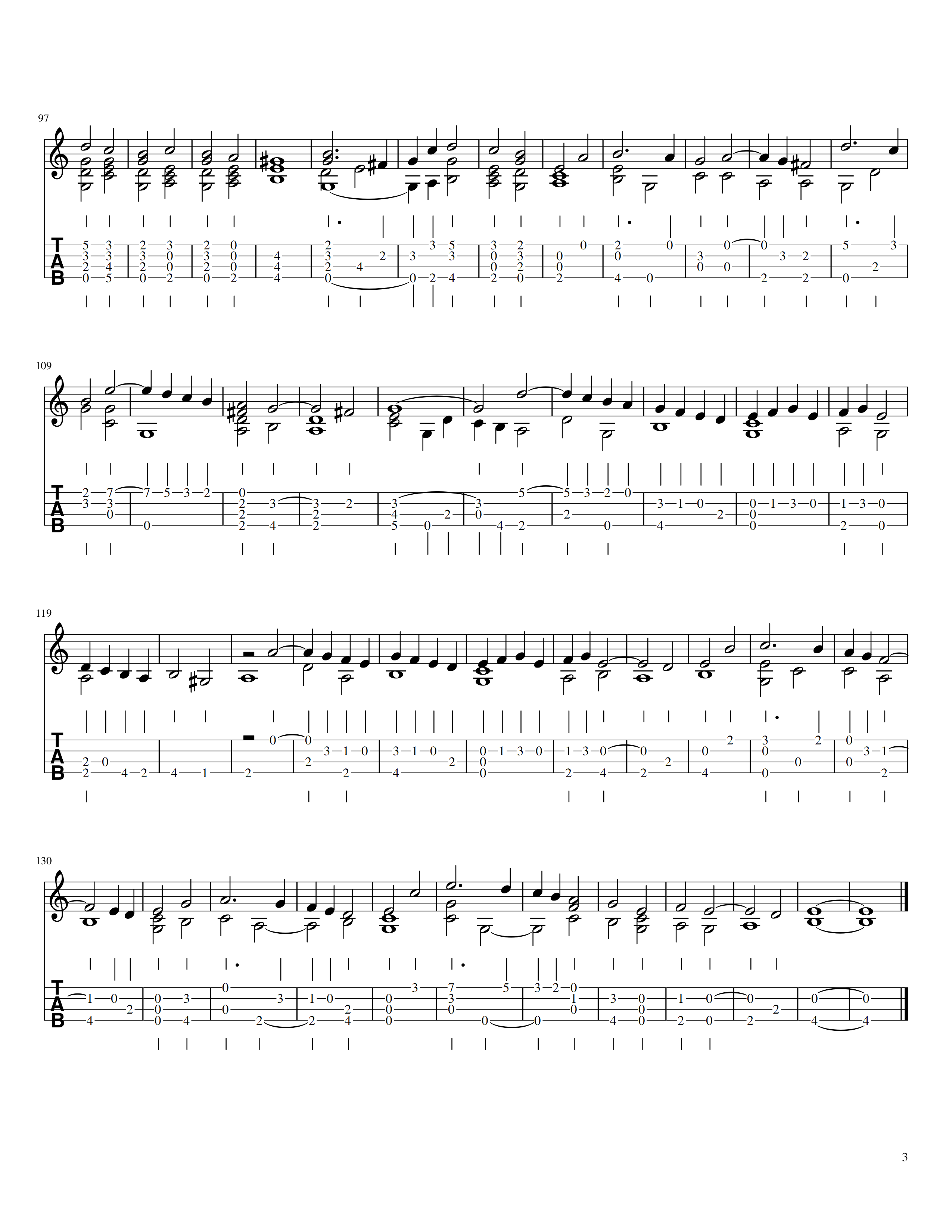
Tento (or Tiento) is a musical genre originating in Spain in the mid-15th century. It is formally analogous to the fantasia (fantasy). The word derives from the Spanish verb tentar (meaning either to touch, to tempt or to attempt), and was originally applied to music for various instruments. The tento is formally extraordinarily diverse, more a set of guidelines than a rigid structural model. Nearly all tentos are imitative to some degree. Listen to Tento #2 on SoundCloud. View/listen to it on YouTube.
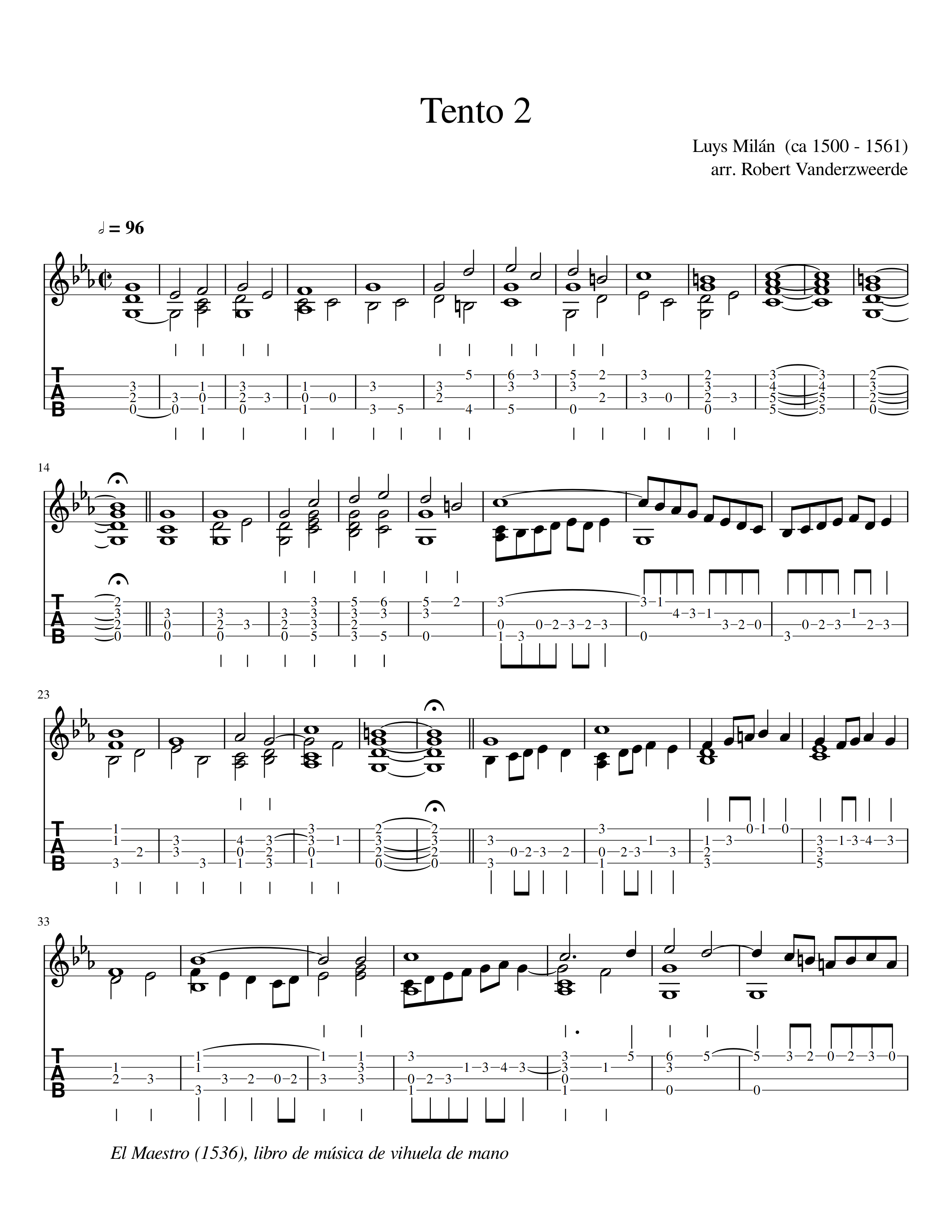
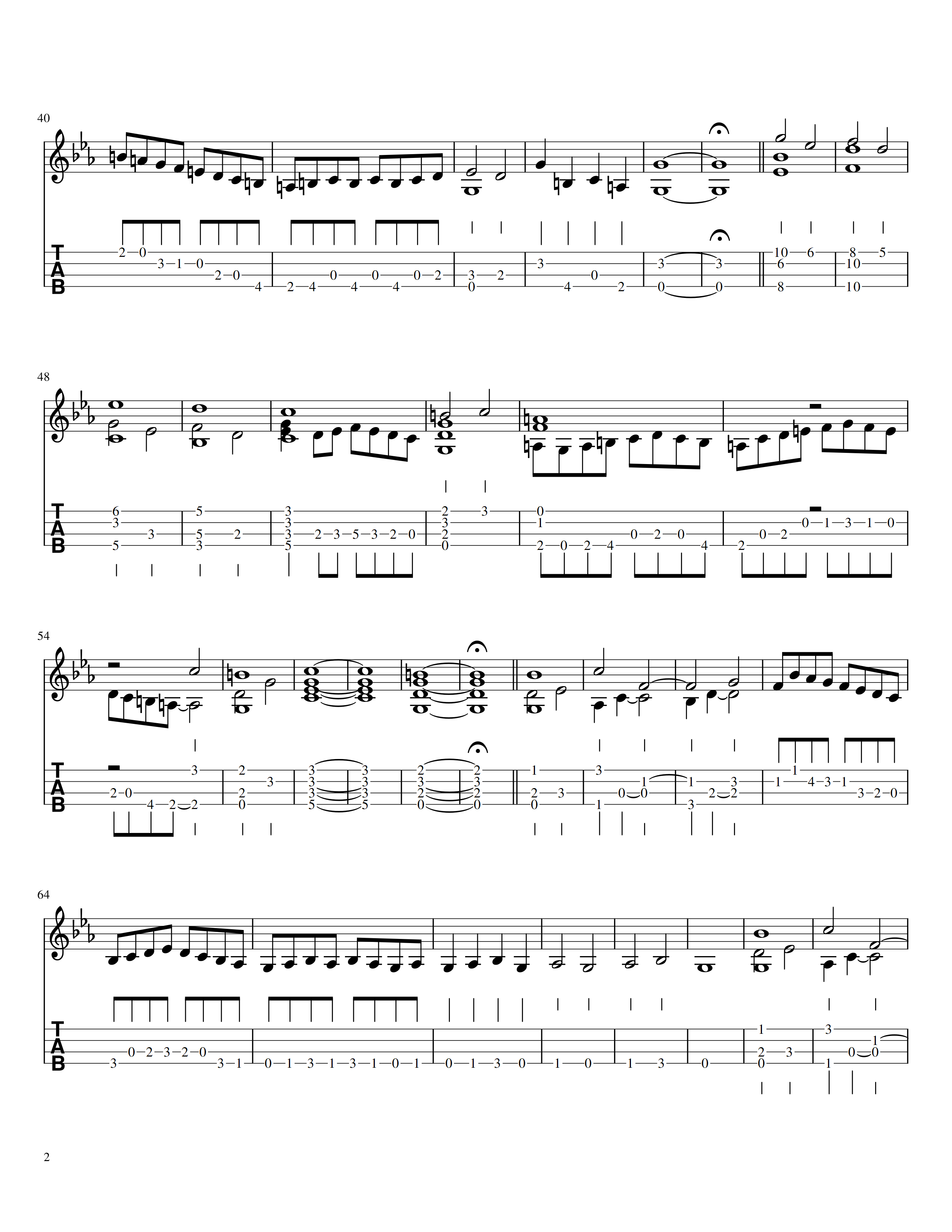
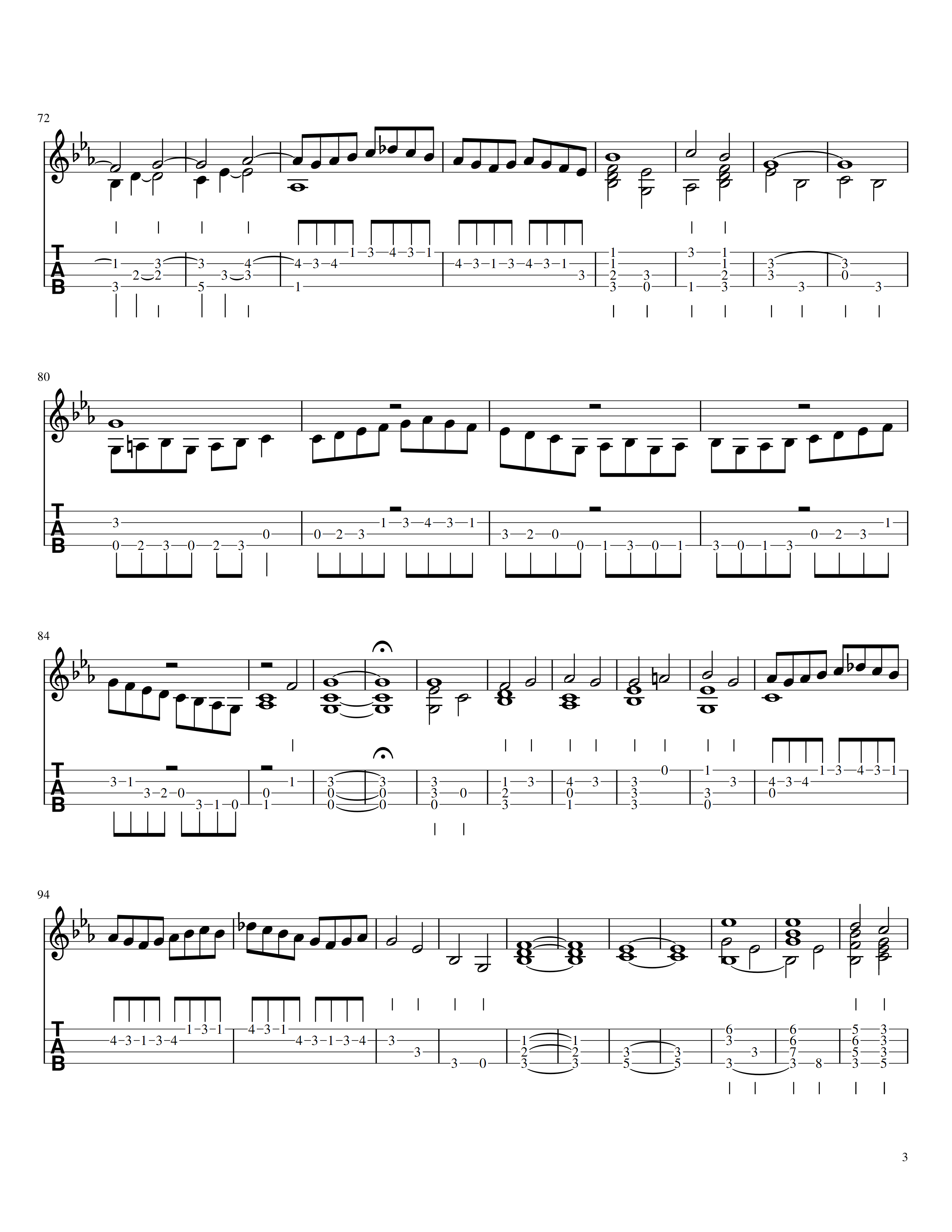

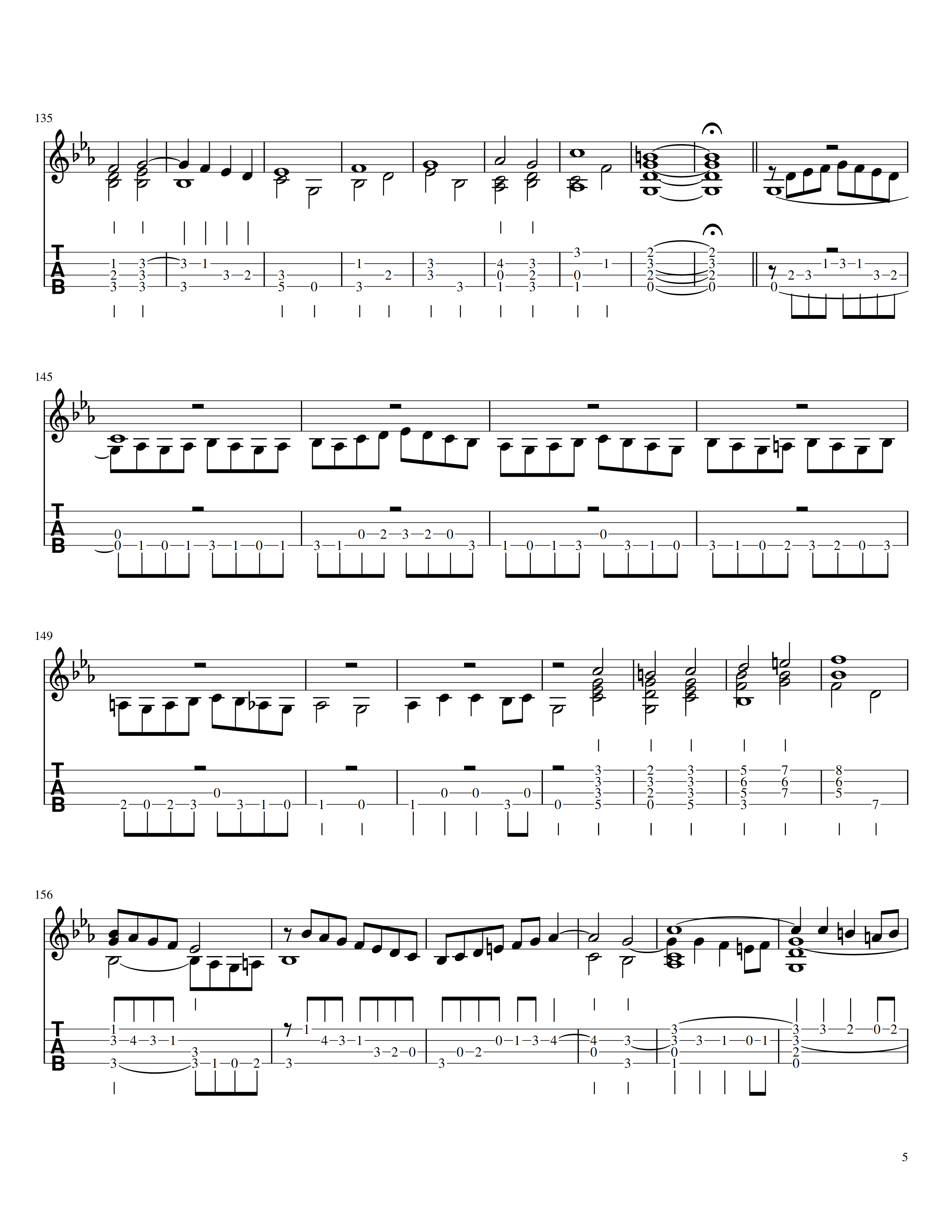

Listen to Tento #3 on SoundCloud. View/listen to it on YouTube.

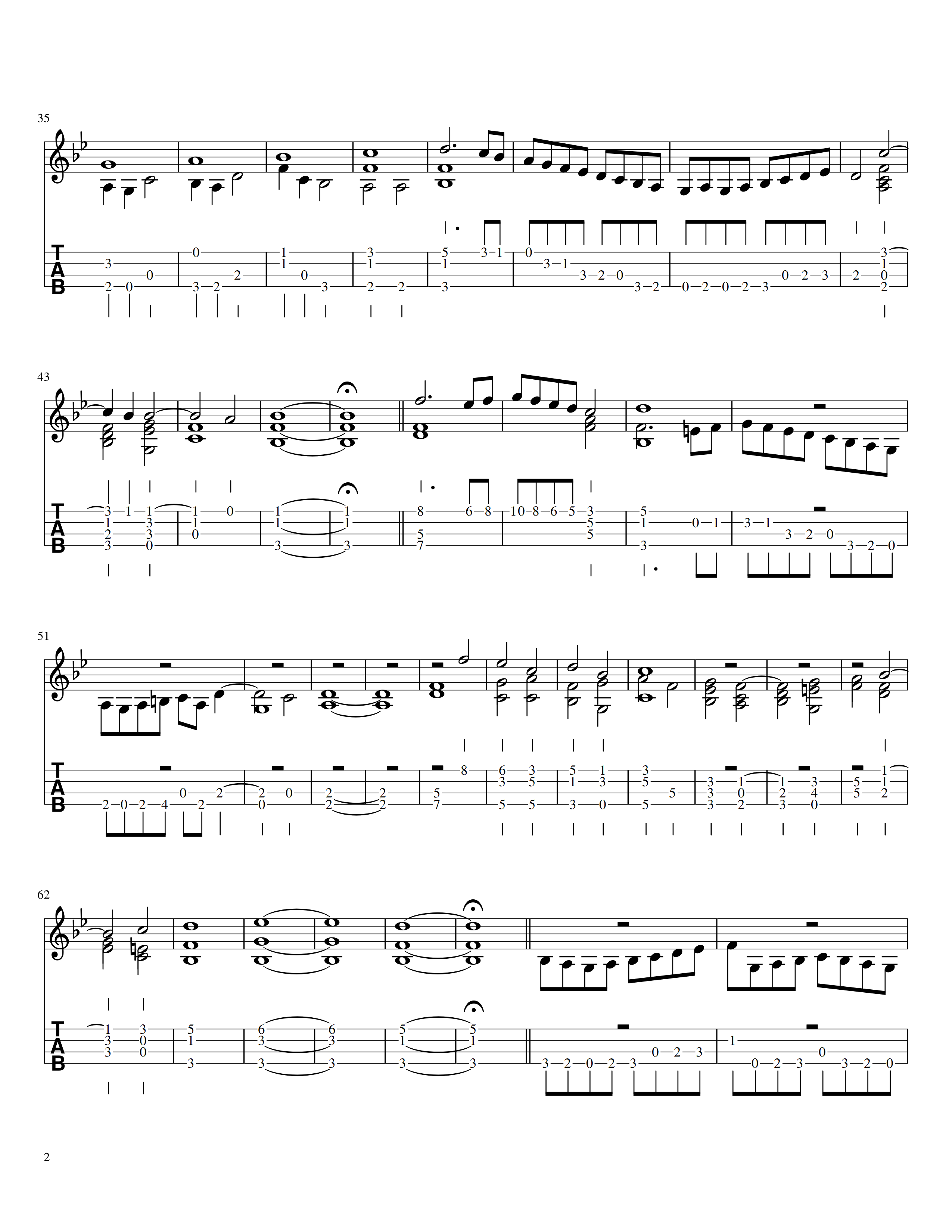
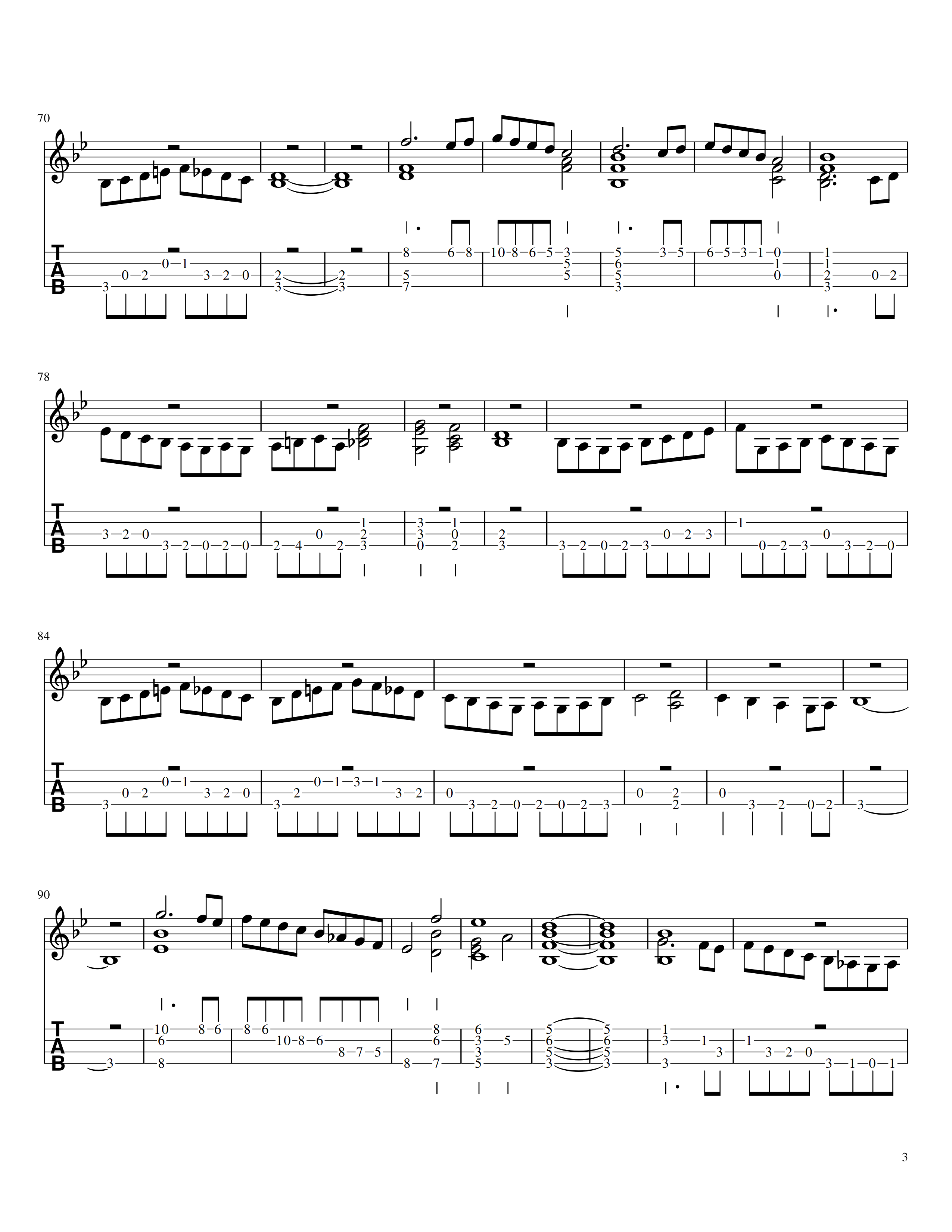



Versos and Psalms
In Libro III (book 3) of Tres libros de musica en cifras para vihuela (1546), Alonso Mudarra (ca 1510 – 1580) presents a series of pieces with separate but aligned vocal and vihuela parts. To celebrate my experience with reading Mensural notation (see more detail in “Music with vocal and instrumental parts”), I am making two of the versos and two of the psalms available for free (they are also included in the book Mudarra Favorites on the Ukulele (Book 6)).
A verso is simply a verse set to music. The ones below are in Latin.
“Regia qui mesto” is a lament for the death of Princess Mary Manuela of Portugal. View/listen to it on YouTube. In this recording, a clarinet is chosen to represent the vocal line and the vocal/instrumental phrasing matches the text in the first verse only (the phrasing should be changed based on the text in the next two verses).

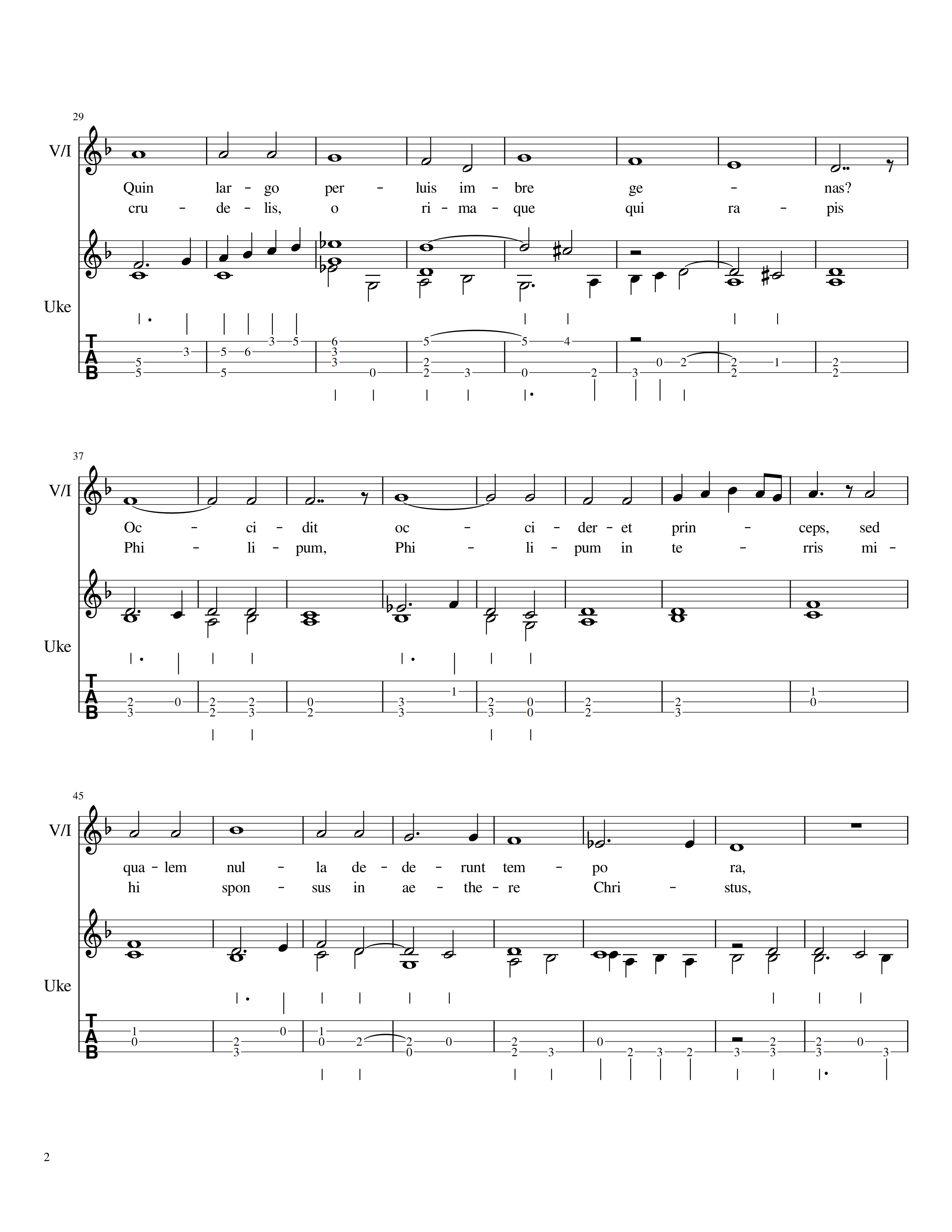

“Beatus ille” is actually my favorite verso. It is marked to be played/sung as a moderate tempo. However, that sounded too much like a dirge so I listened to some recordings and found one at at quite a fast pace. Here it is at 200 bbm, more than twice as fast as Mudarra intended. I like it as the rhythms really stand out and are kind of off-kilter (i.e. short notes when you expect long notes, lots of notes on the off beats). A clarinet simulates the vocal part. Have fun listening to it on YouTube. Sorry, this one is not free but is available in the book “Mudarra Favorites on the Ukulele (Book 5)”.
“Dulces exuviae” is a setting of Dido’s final monologue from Book IV of Virgil’s Aeneid. View/listen to it on YouTube. In this recording, a clarinet is chosen to represent the vocal line and the vocal/instrumental phrasing is the arranger’s interpretation (the phrasing should be changed based on the text). NOTE that this poem has been set to music by many composers, including Josquin des Prez, so when searching for other performances, make sure to include “Mudarra” in your search criteria, otherwise all the results will be the music of Josquin.





The Mudarra psalms are the first instrumental fabordones, or for voice and instrument. A fabordone or fauxbourdon is a musical technique of harmonization, or chant, used in the music of the end of the Moyen Age and the debut of the Renaissance. The monotony of parallel cords favors the understanding of the text in Latin.
“Nisi Dominus” is a setting of Psalm 126. View/listen to it on YouTube. A clarinet is used to simulate the vocal part.

“Exurge, quare obdormis” is a setting of Psalm 43, verses 23-24. View/listen to it on YouTube. A clarinet is used to simulate the vocal part.

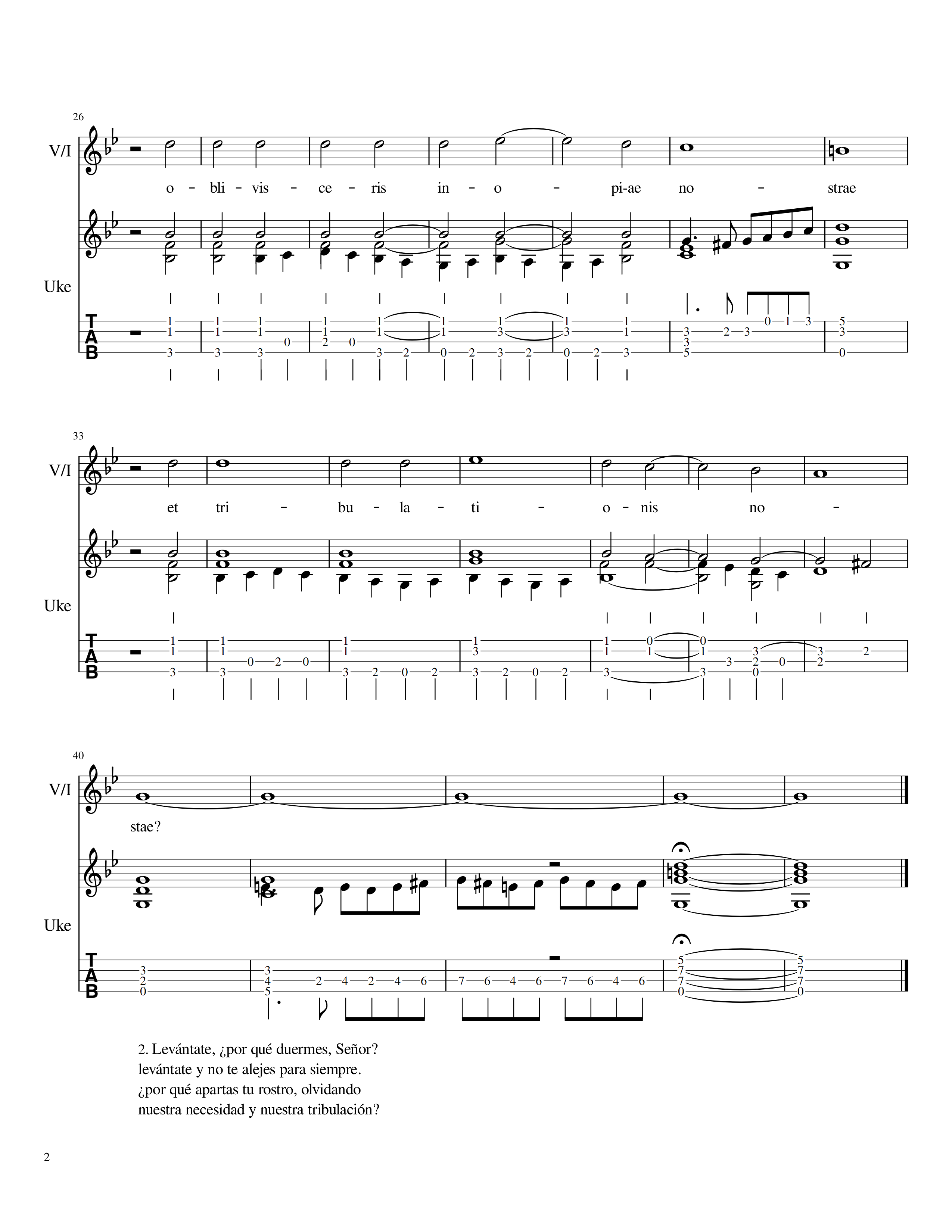
Strambote
This is an example of a strambote (or madrigal) from Fuenllana’s Orphenica Lyra (Libro V) by Jacques Arcadelt. View/listen to it on YouTube.
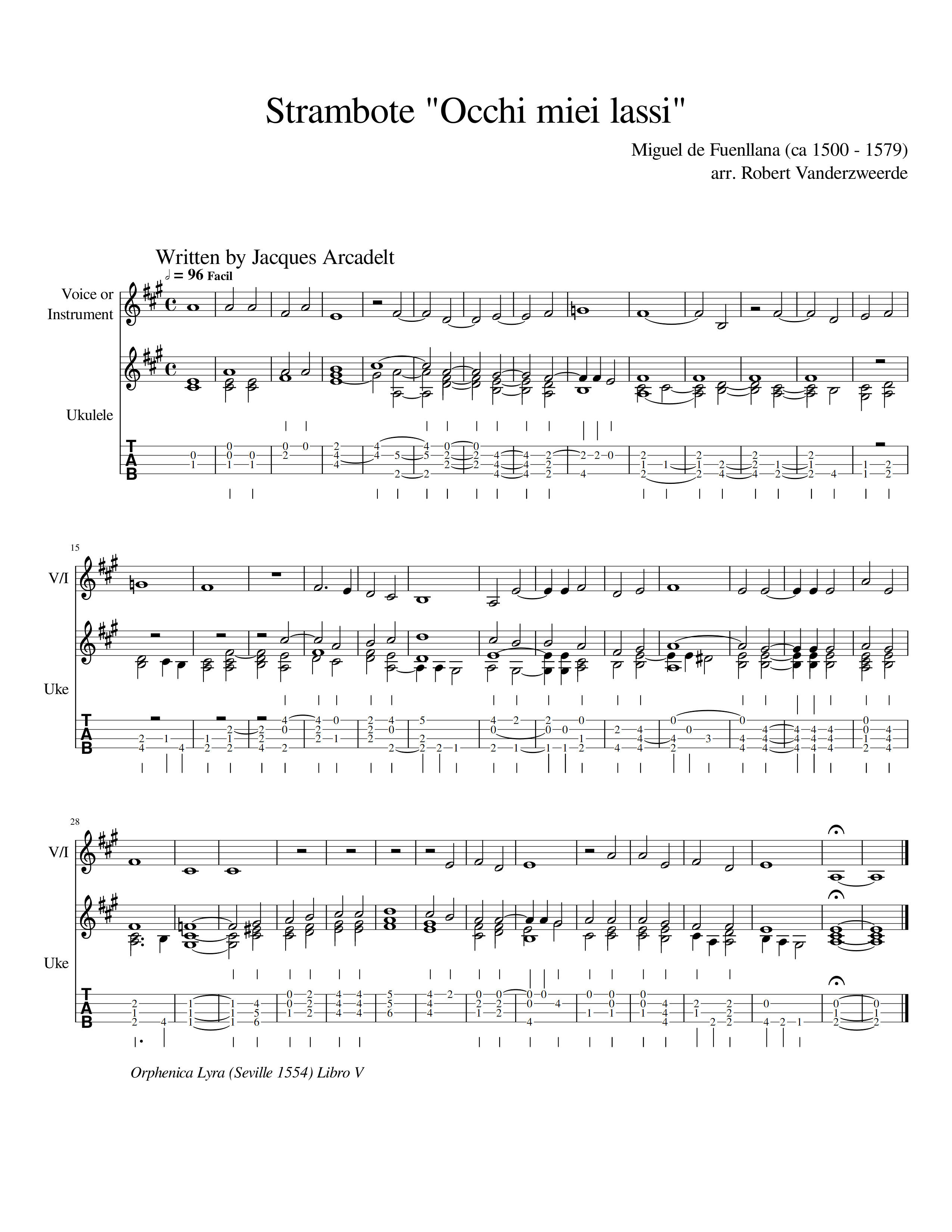
Fabordon
I came across this piece while I was arranging a series of 16th century motetes in Orphenica Lyra by Miguel de Fuenllana. It is descirbed as “… en fabordon conpuestos” or using compound fabordon.
Fabordon (also fauxbourdon, fauxbordon, and falso bordone) – false drone – is a technique of musical harmonisation used in the late Middle Ages and early Renaissance. The homophony and mostly parallel harmony allow the text of the mostly liturgical lyrics to be understood clearly. In its simplest form, it consists of the cantus firmus (drone) and two other parts a sixth and a perfect fourth below. To prevent monotony, or create a cadence, the lowest voice sometimes jumps down to the octave, and any of the accompanying voices may have minor embellishments.
Think of it as a series of chord progressions with some passing notes. This piece is written in “ochotonos” or eight different tones. The text in latin “Donee ponam inimicos tuos …” means “Give me your enemies … and I will lay them at your feet” (i.e. slay them). View/listen to it on YouTube.

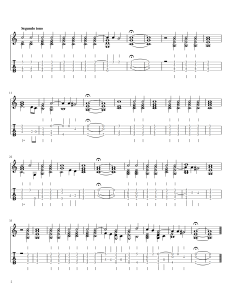

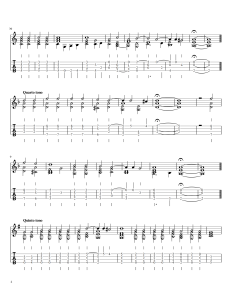
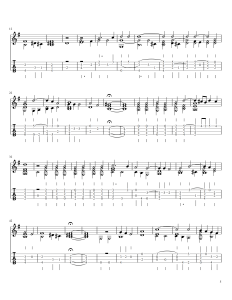
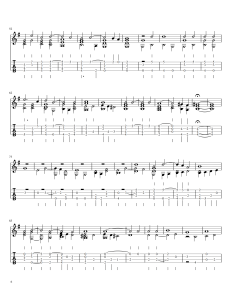
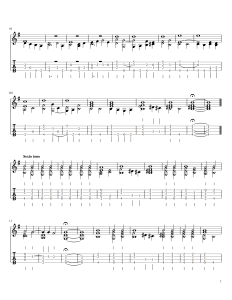
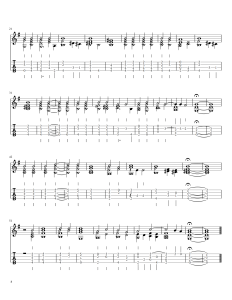
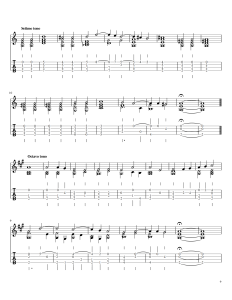
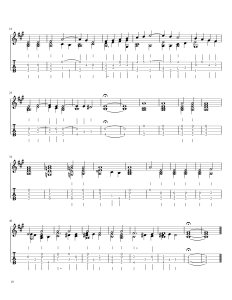
Motete
I am just completing a set of three volumes of motetes (motets) and, to share my anticipation, I’m published this one motete as a free sample. Here’s a link to the audio/video … https://youtu.be/uIrpso0BFdc
A motete or motet is mainly a vocal musical composition in several parts with words. Motets were mostly sacred madrigals. Secular motets, known as “ceremonial motets”, were typically to praise a monarch, music or commemorate a triumph.
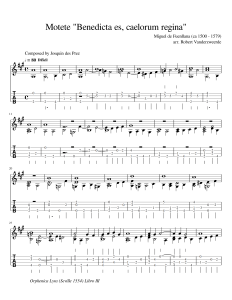
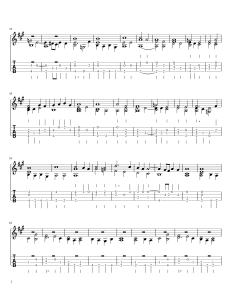
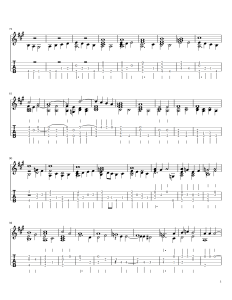
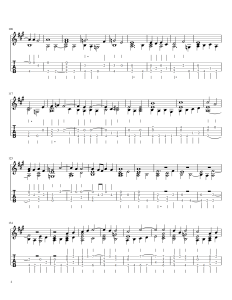
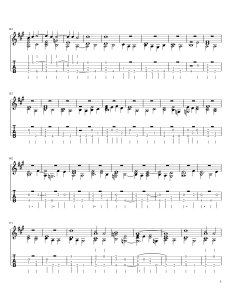

Francesco da Milano
In anticipation of completing two more books of the music of Francesco da Milano, I am offering this piece as a free sample. You can save the attached picture (it’s page sized and should print okay) or ask me and I’ll send you the PDF. Here’s a link to the audio/video … https://youtu.be/CuSPejBiEFs
